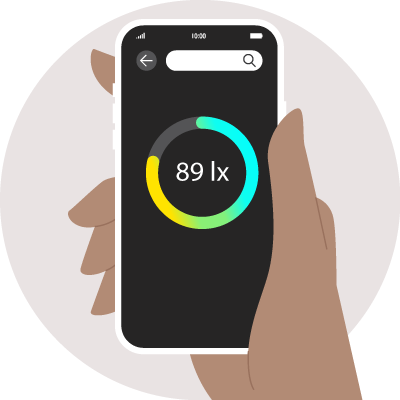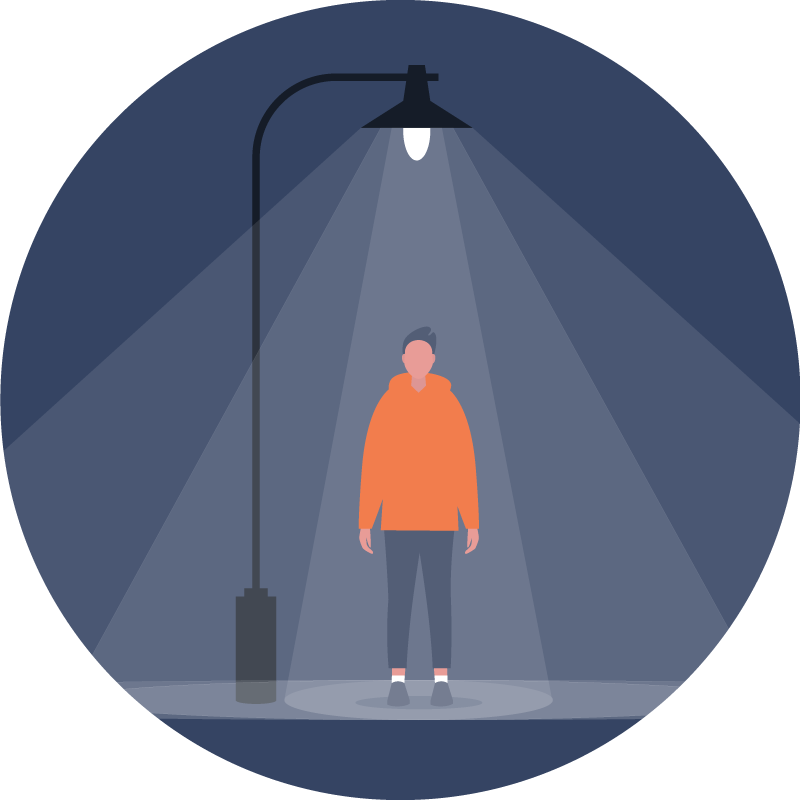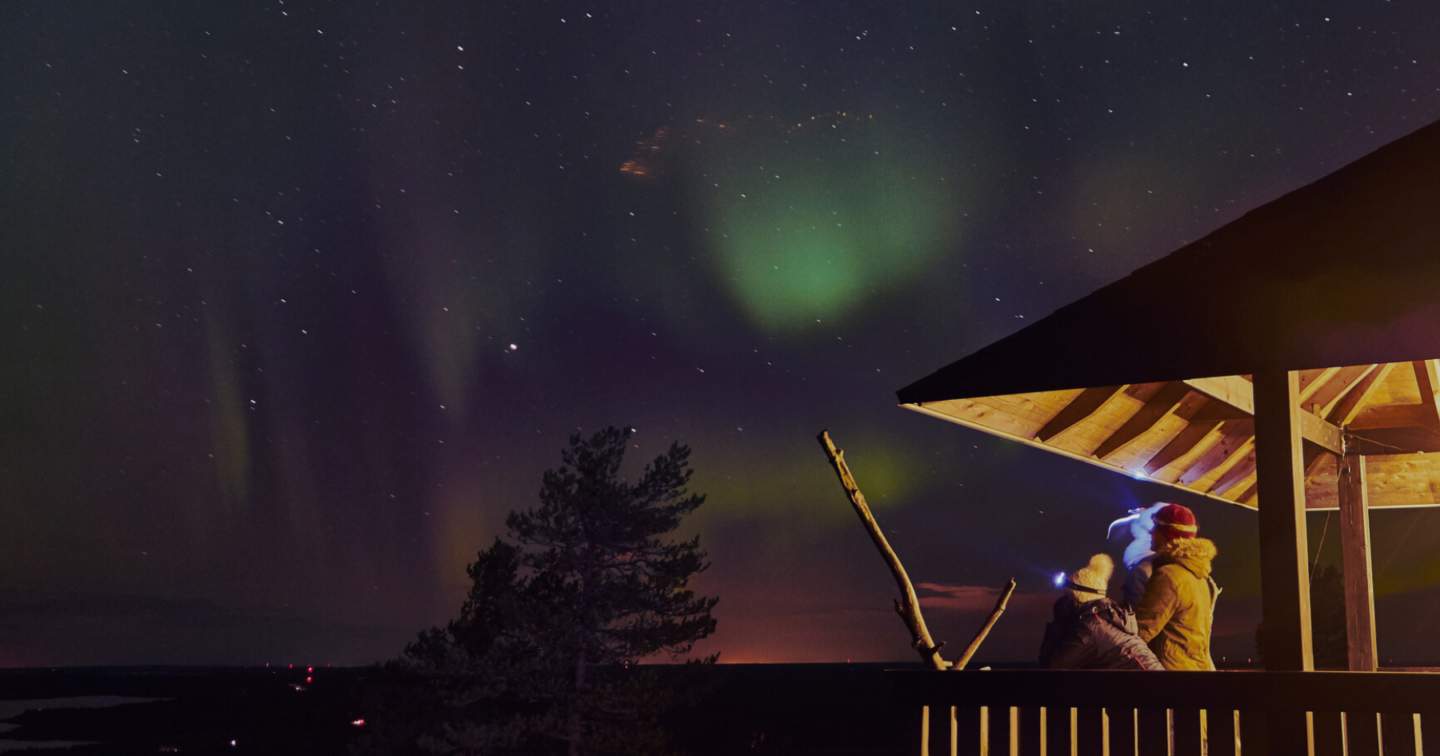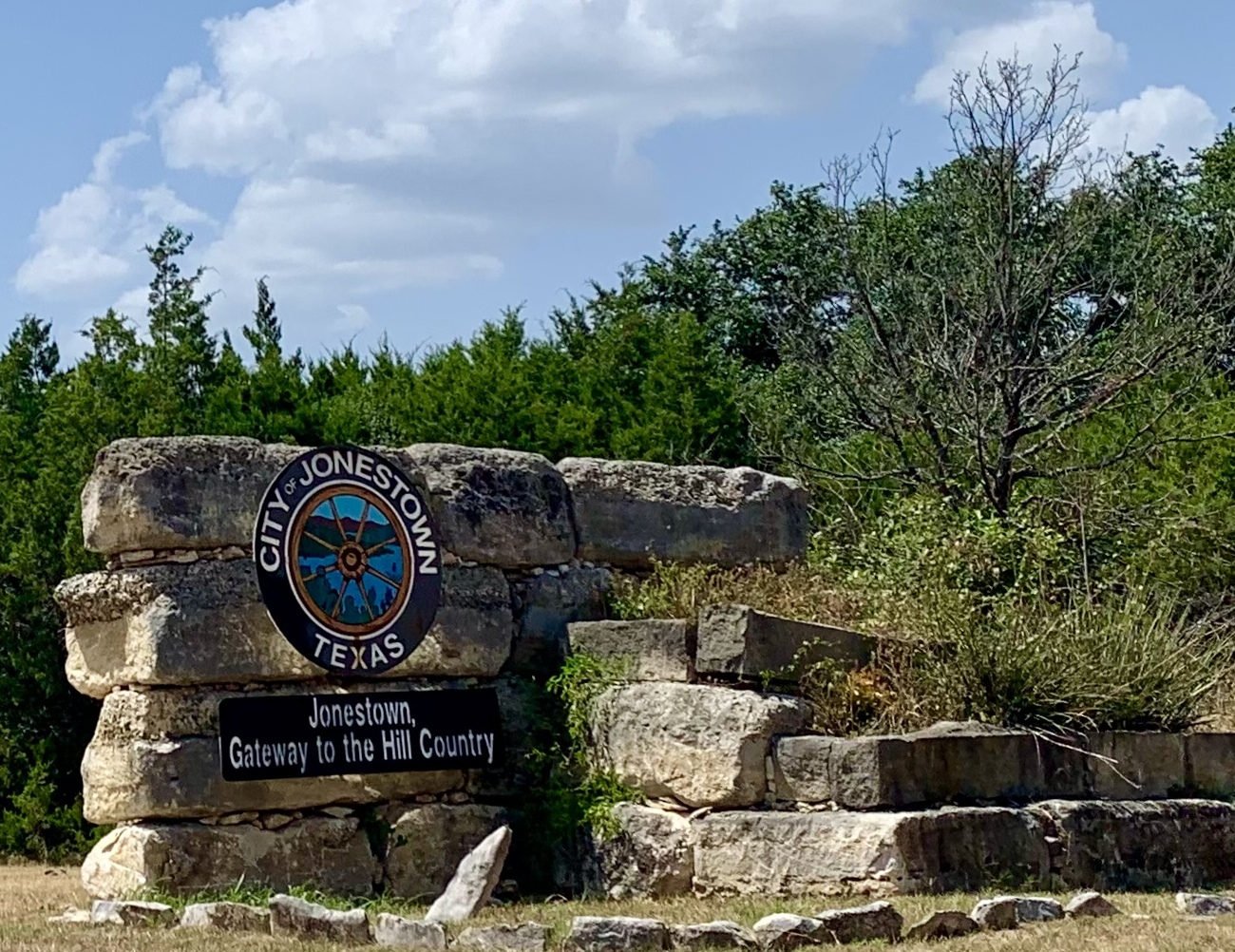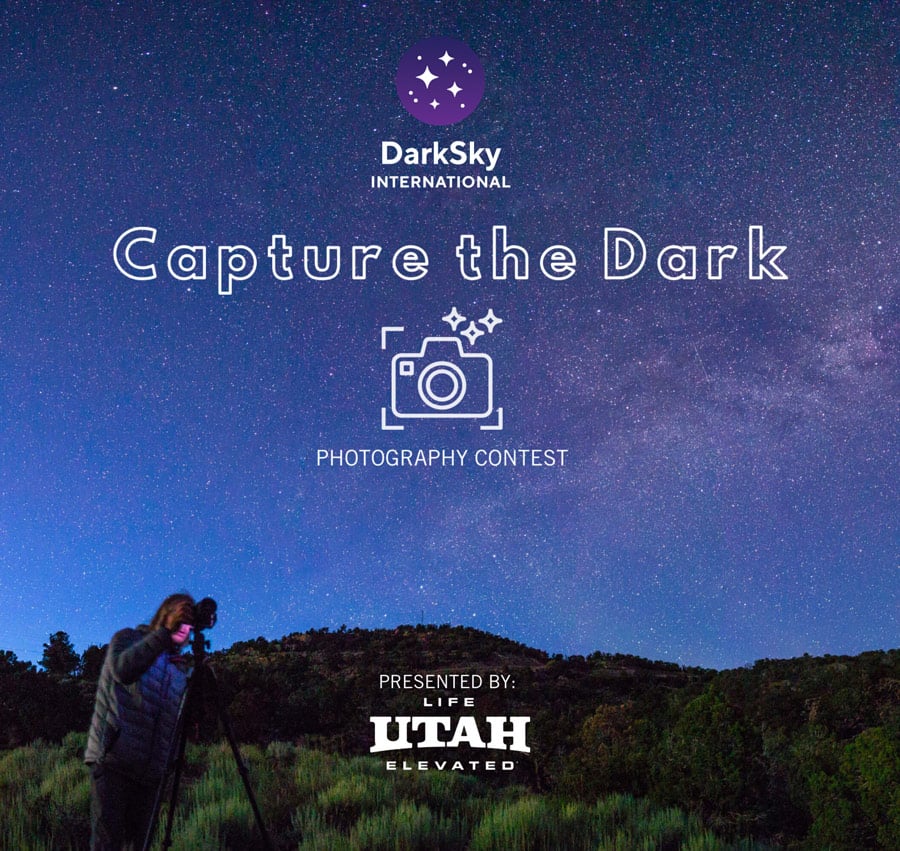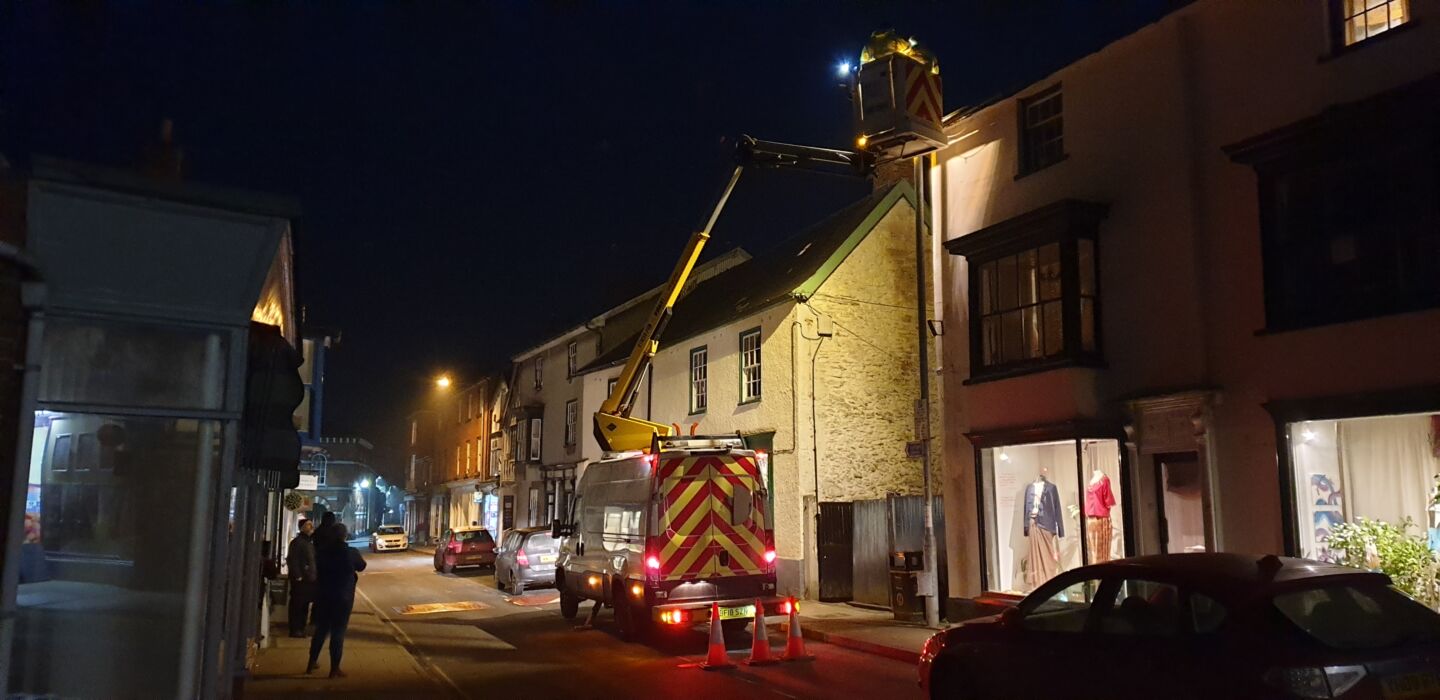
The 2022 Capture the Dark winners and honorable mentions

Photography is one of the most powerful tools in dark sky advocacy. A photograph has the power to spark conservation awareness and reveal how beautiful and functional dark sky-friendly lighting can be. We recently hosted the third annual Capture the Dark Photography Contest presented by Visit Utah to celebrate. We received an astounding 1,180 entries in the nine categories. Our panel of esteemed judges reviewed the photos using criteria that included technical skill, composition, connection to the category theme, and ‘wow’ factor, and the results are in!
Winners of each category will receive a prize package that includes a feature in IDA’s Nightscape publication, the IDA blog and social media, an IDA membership, IDA and Visit Utah swag, and a Peak Design Field Pouch. Additionally, we presented one photograph with a “People’s Choice Award” based on votes by the public. This winner will receive a prize package that includes a $250.00 gift card to B&H, a feature in IDA’s Nightscape publication, the IDA blog and social media, an IDA membership, and IDA and Visit Utah swag.
Check out the winners and some honorable mentions below!
Connecting to the Dark
Experiencing a natural night provides perspective, inspiration, and leads us to reflect on our humanity and place in the universe.
First Place
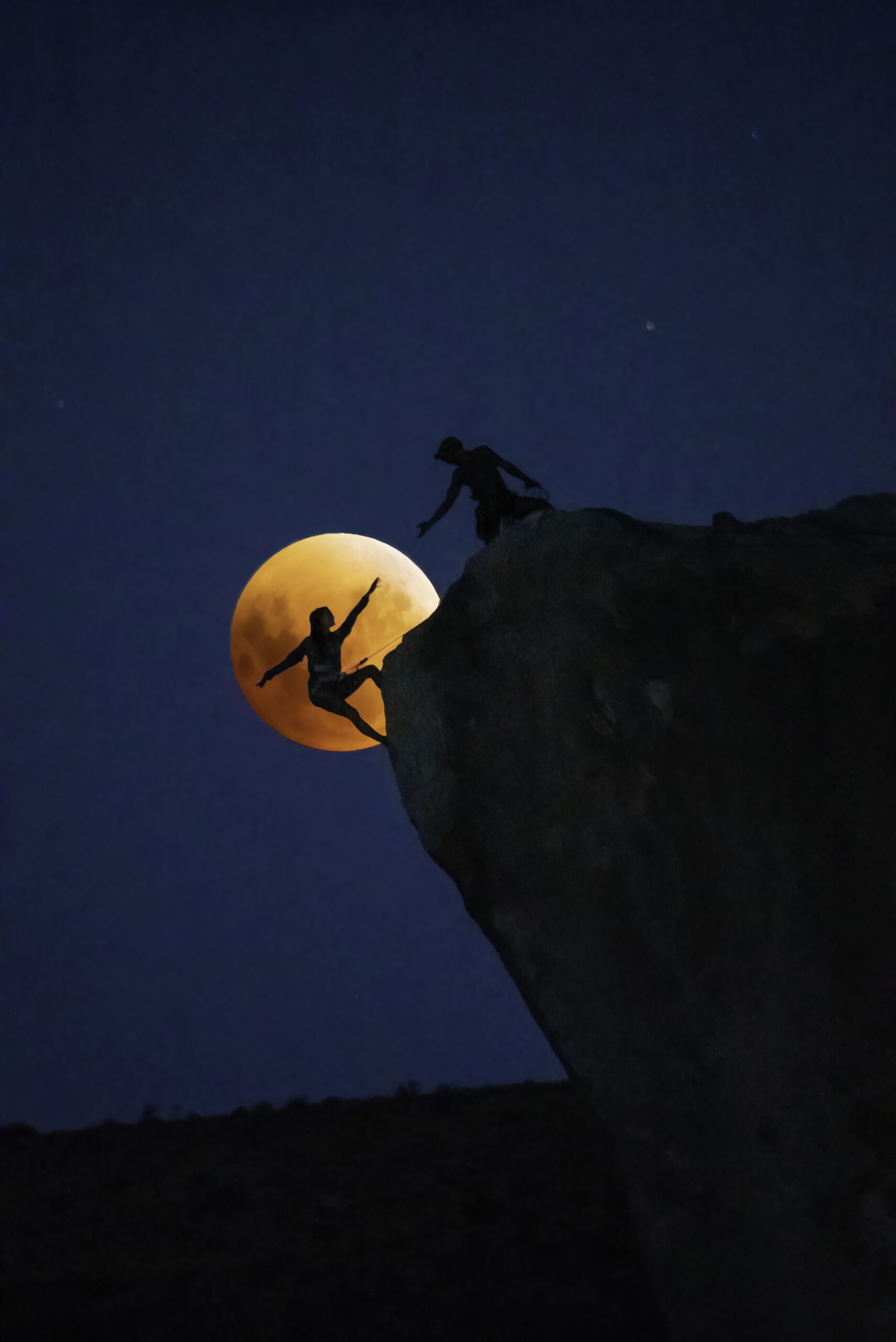
Photo title: Rock climbers under a rising blood moon
Photographer: Chris Olivas
Country: U.S.
Location of photo: Joshua Tree National Park
Story behind the photo: This image was taken of rock climbers utilizing the unique features of Joshua Tree National Park under a brightly lit lunar eclipse. Only in this dark sky park was the surrounding area dark enough for the moon to be unobscured by light pollution and clear enough to see right after sunset. This was meticulously planned for the location, timing, and positions of all elements. In order to get both the moon and subjects in focus using a telephoto lens, I focused on each separately and blended them together.
Technical information: Blend | Lens: Tamron 150-600 mm | Aperture: 6.3 | ISO: 51200 | Shutter speed: 1/3 second
Second Place
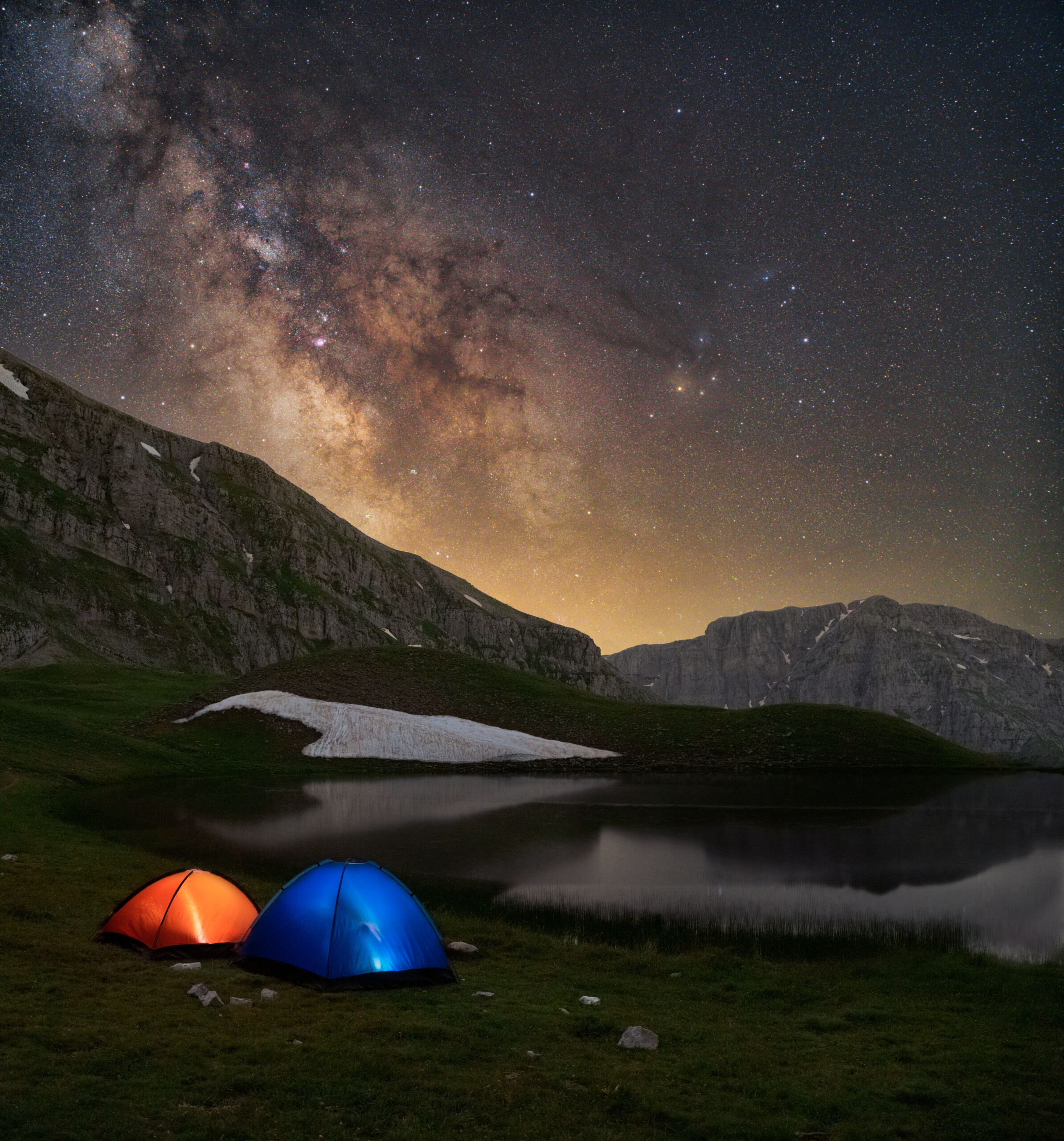
Photo title: Thousand Stars Hotel
Photographer: Elias Kolovs
Country: Greece
Location of photo: Tymfi, Zagoroxoria
Story behind the photo: It was our first time camping at this place. At 2050 meters and after 5 hours of walking, we managed to reach Drakolimni of Tymfi. An alpine place and a lake that is remnants of glaciers. Away from the light pollution of the city, you could see the whole galaxy and the nebulae.
Technical information: Blend | Lens: Tamron 28-75 | Aperture: 4 | ISO: 2500 | Shutter speed: 60 seconds
Third Place
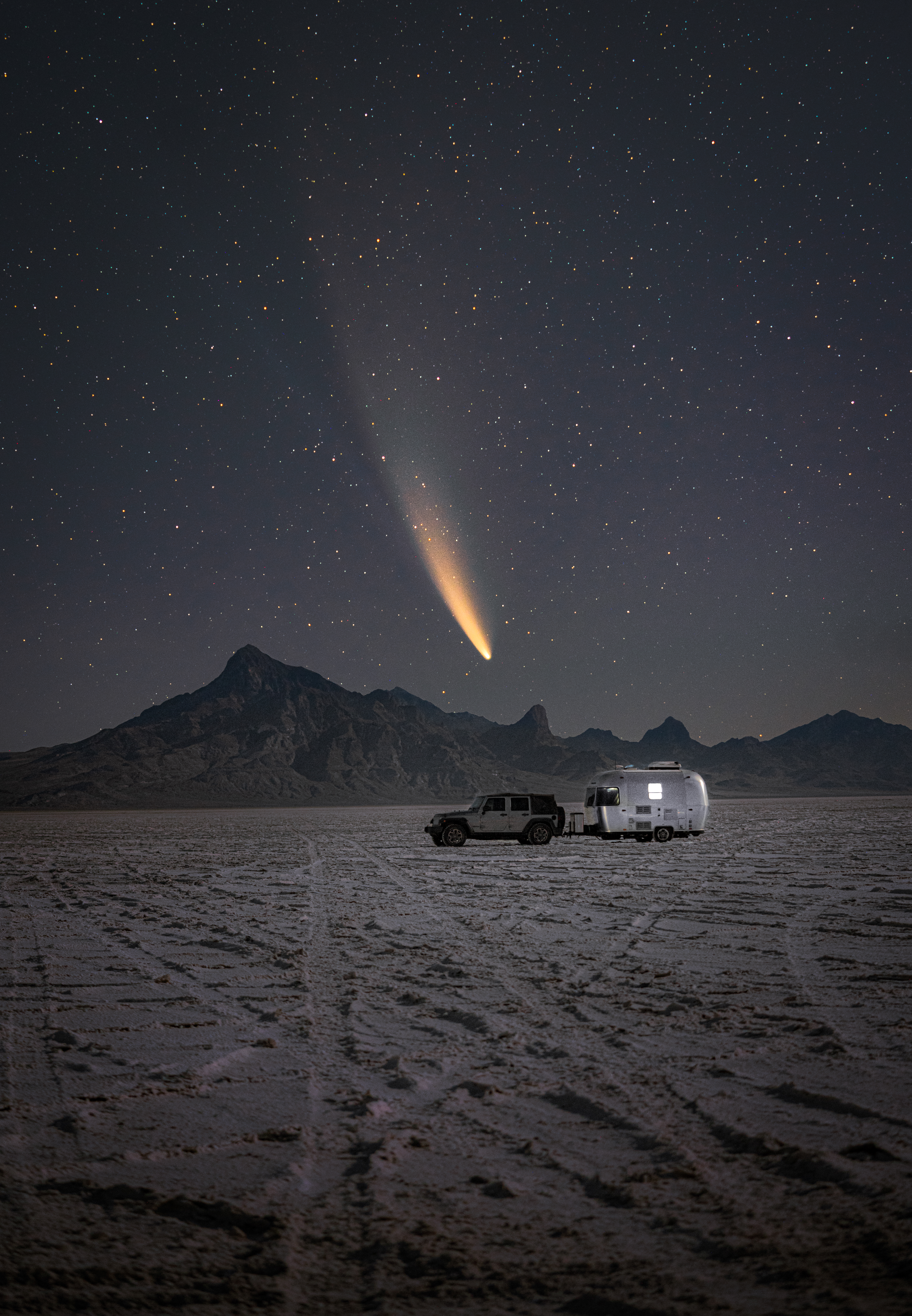
Title of photo: Comet Streams
Photographer: Kenny LeRose
Country: U.S.
Location of photo: Bonneville Salt Flats, Utah
Story behind the photo: A moment that comes once every 6,000 years. Neowise was the highlight of my photography career thus far. This was an image I drove 800 miles across multiple states to capture. I had a vision & without hesitation, hopped in my rig (seen in this photo) to drive a full day to the Salt Flats in Utah. I rolled up just before sunrise without a moment to spare. This comet was only visible for about 30 minutes prior to sunrise. I had to move quickly before the morning light washed out the majestic dark sky that revealed such a gem. Since I began living a nomadic life 5 years ago, I’ve found myself connecting to our night skies in ways I couldn’t imagine. Parking my tiny home under the darkest skies and documenting such moments became normalcy for me. This image represents so much more than just a comet and my home. It’s a reminder of what “life living at its fullest” truly means!
Technical information: Blend | Lens: Sony 70-200mm 2.8 | Aperture: 2.8 | ISO: 2000 | Shutter speed: 25 seconds
International Dark Sky Place
Nearly 200 protected lands and municipalities around the world have been certified by IDA as an International Dark Sky Place, creating havens for astrophotographers.
First Place
![]()
Title of photo: Perseid Meteor and Sprites
Photographer: Stephen Hummel
Country: U.S.
Location of photo: McDonald Observatory, Texas, U.S.
Story behind the photo: A bright meteor from the Perseid meteor shower pierced the sky at the same moment a large sprite, an electrical breakdown in the upper atmosphere, occurred over a distant thunderstorm. The image was taken from McDonald Observatory in West Texas, a core area of the Greater Big Bend International Dark Sky Reserve. The sprite occurred over 400km away over Chihuahua, Mexico. The profile of the Davis Mountains can be seen in the foreground. Dark skies are crucial to observing and researching sprites and other events in the night sky.
Technical information: Single exposure | Lens: 135mm | Aperture: 2 | ISO: 4000 | Shutter speed: 2 seconds
Second Place
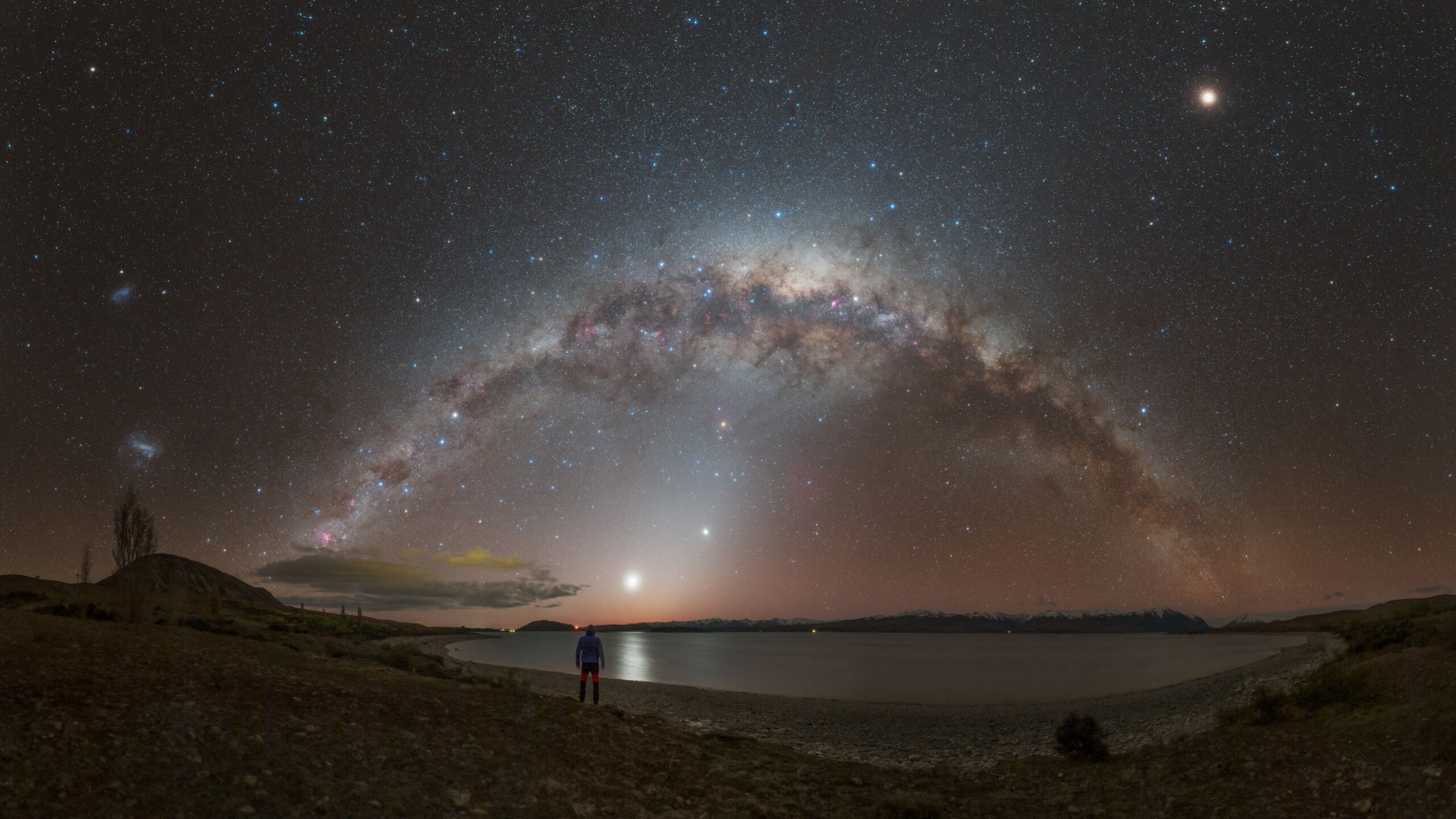
Title of photo: Amazed by the truly dark night sky
Photographer: Martin Činčura
Country: Slovakia
Location of photo: Lake Tekapo, New Zealand
Story behind the photo: Aoraki Mackenzie International Dark Sky Reserve – Area with zero light pollution I visited in 2018. One of the best spots worldwide for enjoying the truly dark night sky. There are a lot of beautiful scenes in this area. I stayed one night next to Lake Tekapo. A breathtaking moment for me but also a bit sad because there is no such place in central Europe anymore.
Technical information: Single exposure/panorama | Lens: Sigma Art 35mm F1,4 | Aperture: 2.5 | ISO: 10,000 | 10 seconds
Third Place

Title of photo: Perseid, Milkyway, Zodiacal Light, Pleiades, and Orion in Joshua Tree National Park
Photographer: Sean Parker
Country: U.S.
Location of photo: Joshua Tree National Park
Story behind the photo: Here is a shot I took just before astronomical dawn, which shows the Milky Way arching next to a Perseid meteor on the left, and zodiacal light, Pleiades, and the constellation Orion on the right. This is an older photo, but one of my favorites from Joshua Tree!
Technical information: Single exposure/panorama | Lens: Tamron 15-30 | Aperture: 2.8 | ISO: 5000 | Shutter speed: 20 seconds
The Impact of Light Pollution
Light pollution can have significant impacts on the environment, human health, and our access to the night sky.
First Place
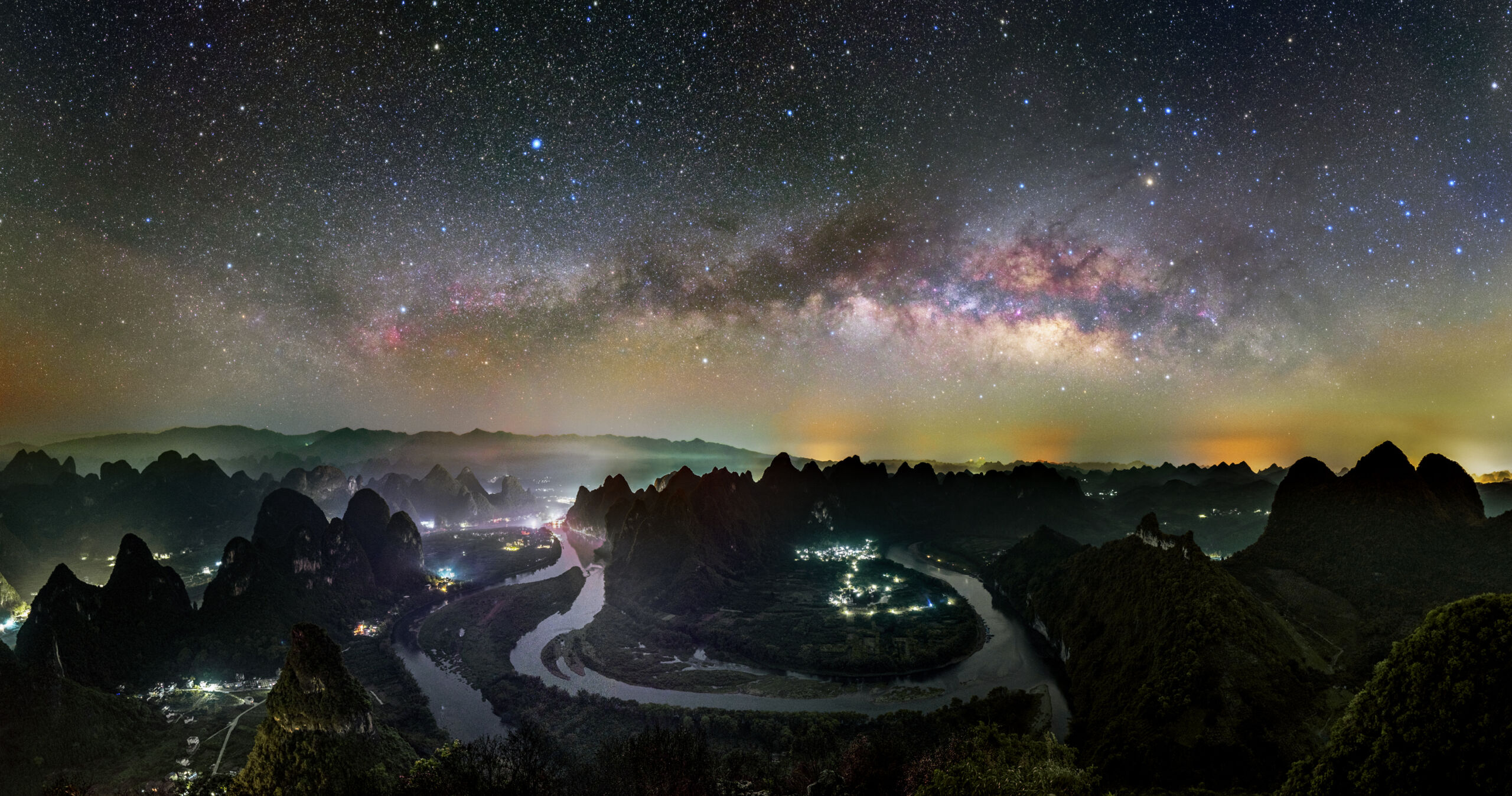
Title of photo: Milky Way over Li River
Photographer: Wang Jin
Country: China
Location of photo: Guilin, Guangxi, China
Story behind the photo: Many people climb to the top of the mountain Da Mian Shan and see the First Bay of Lijiang River, with a deep impression of sunrise, sea of clouds, light, and shadow, but few people know that the Milky Way will rise right here. In April, it should have been the season of misty and rainy Lijiang River, but we unexpectedly ushered in a perfectly clear night. Although the lights of Xingping wharf on the opposite side are very bright, they still cannot block the brilliance of the Milky Way.
Technical information: Blend/panorama | Lens: Viltrox 13mm f/1.4 | Aperture: 1.4 | ISO: 400 | Shutter speed: 60 seconds
Second Place
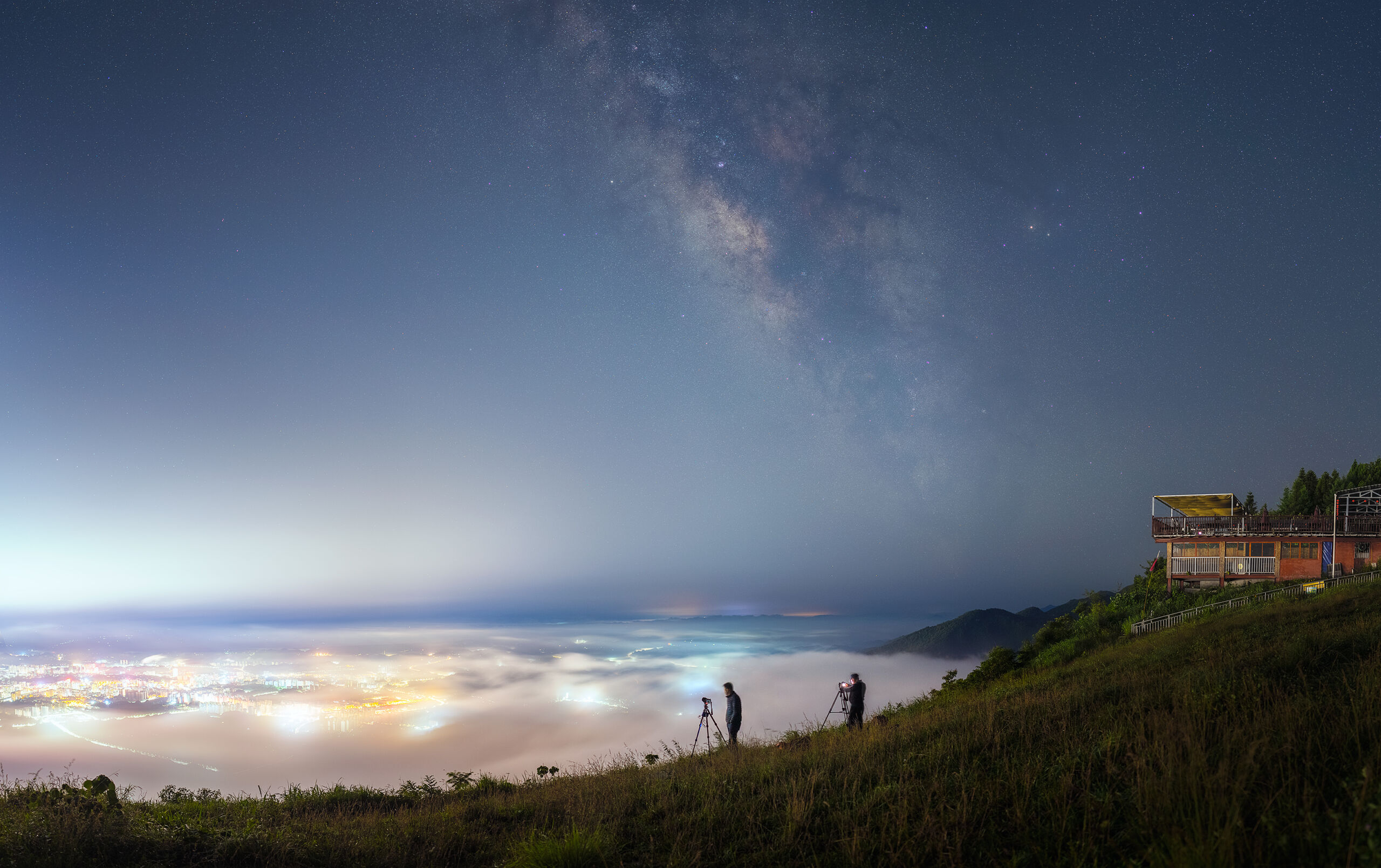
Title of photo: The galaxy of my city
Photographer: Kuang Wei
Country: China
Location of photo: Enshi/Hubei/China
Story behind the photo: I lived in the countryside when I was a kid, at that time, I could see the Milky Way as soon as I looked up at night. But now, we can no longer see the Milky Way in the place where we live. If we want to see the Milky Way, we have to go further, higher and wilder. That’s why I captured this photo, to see the Milky Way in our city again. It was a clear night after raining. I waited for the clouds to climb above so they would block light pollution in the city and make the Milky Way visible again. Even so, we can still see the impact of light pollution on the Milky Way.
Technical information: Blend | Lens: Sony 24mm f1.4 GM | Aperture: 1.8 | ISO: 800 | Shutter speed: 8 seconds
Third Place
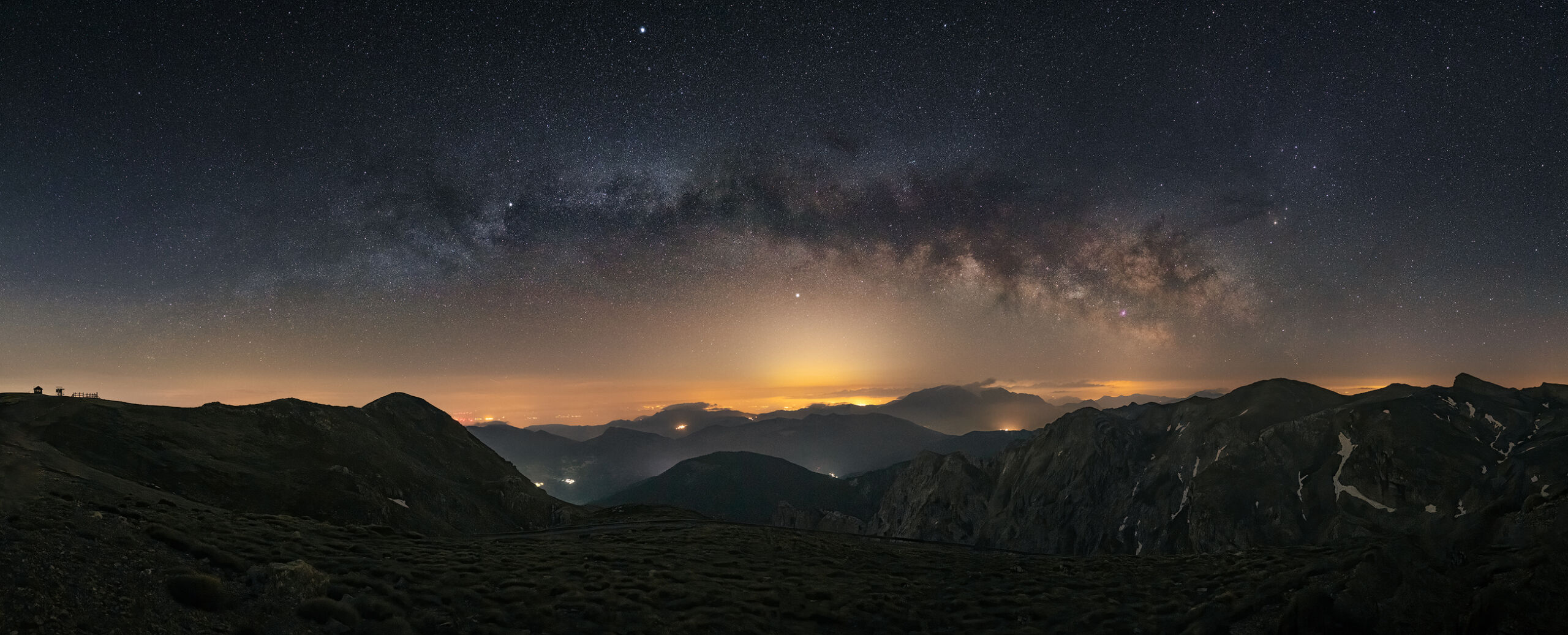
Title of photo: Strain for some darkness
Photographer: Constantine Themelis
Country: Greece
Location of photo: Helmos Observatory, Greece
Story behind the photo: Light pollution is reaching more and more dark places around the globe. Helmos Observatory is such a place. A formerly pure dark place is not bothered by the expansion of irrational lighting.
Technical information: Single exposure/panorama | Lens: Canon EF 16-35mm f/2.8L | Aperture: 2.8 | ISO: 6400 | Shutter speed: 15sec x 16 images
The Bright Side of Lighting
Light pollution can give artificial lighting a bad reputation, but lighting that follows IDA’s Principles for Responsible Outdoor Light can be beautiful, healthy, and functional.
First Place
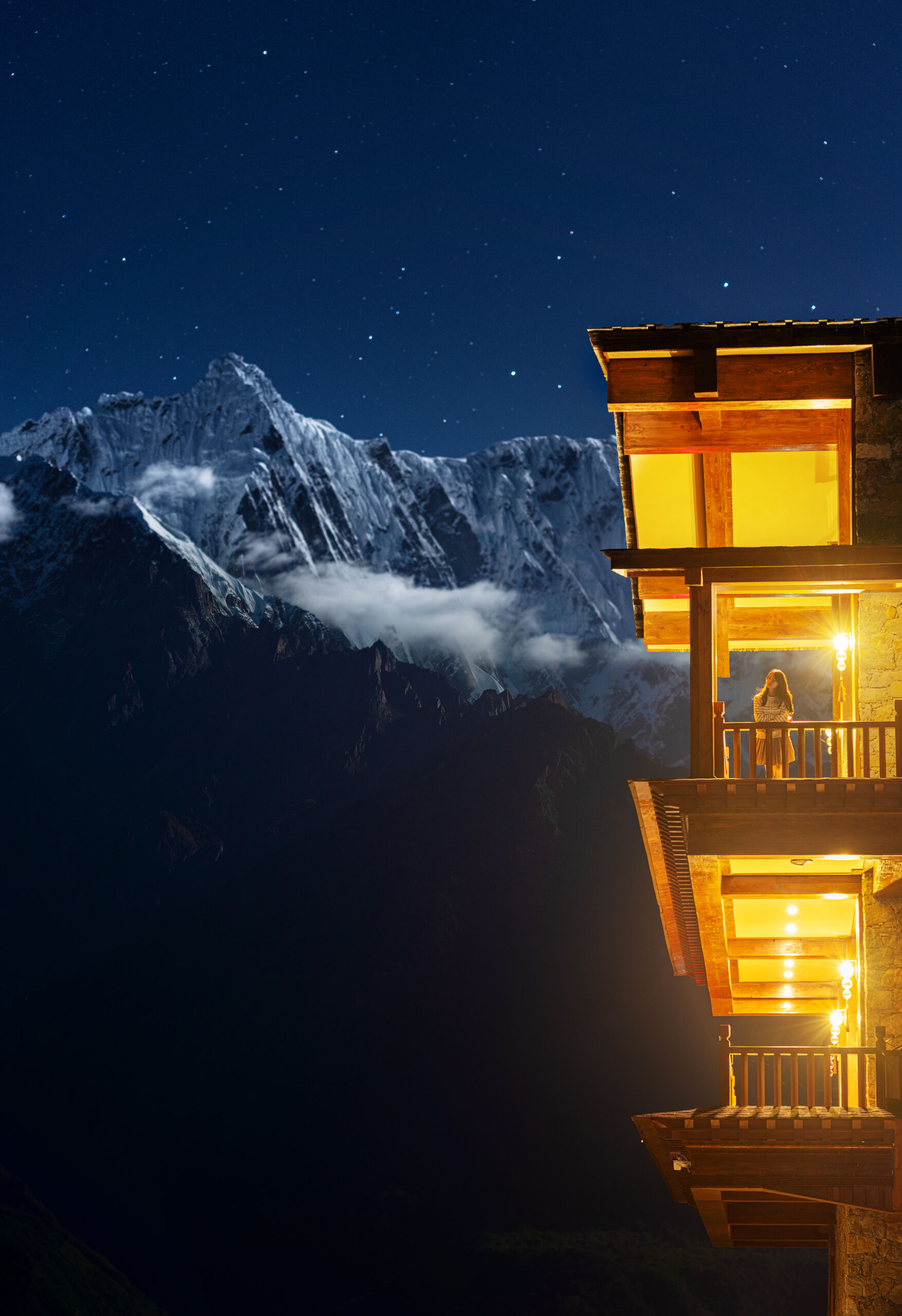
Title of photo: Nocturne of the Himalayas
Photographer: Haitong Yu
Country: China
Location of photo: Tibet, China
Story behind the photo: Namcha Barwa is the highest peak in the east section of the Himalayan mountains. Located in east Tibet, it stands at 7782 meters under cold moonlight. The hotel beneath this sacred snow peak used only dim lights for basic visibility so that we could enjoy the mysterious light of the snow peak under a full moon.
Technical information: Single exposure | Lens: Sony 85mm F1.4 | Aperture: 1.4 | ISO: 100 | Shutter speed: 6 seconds
Second Place
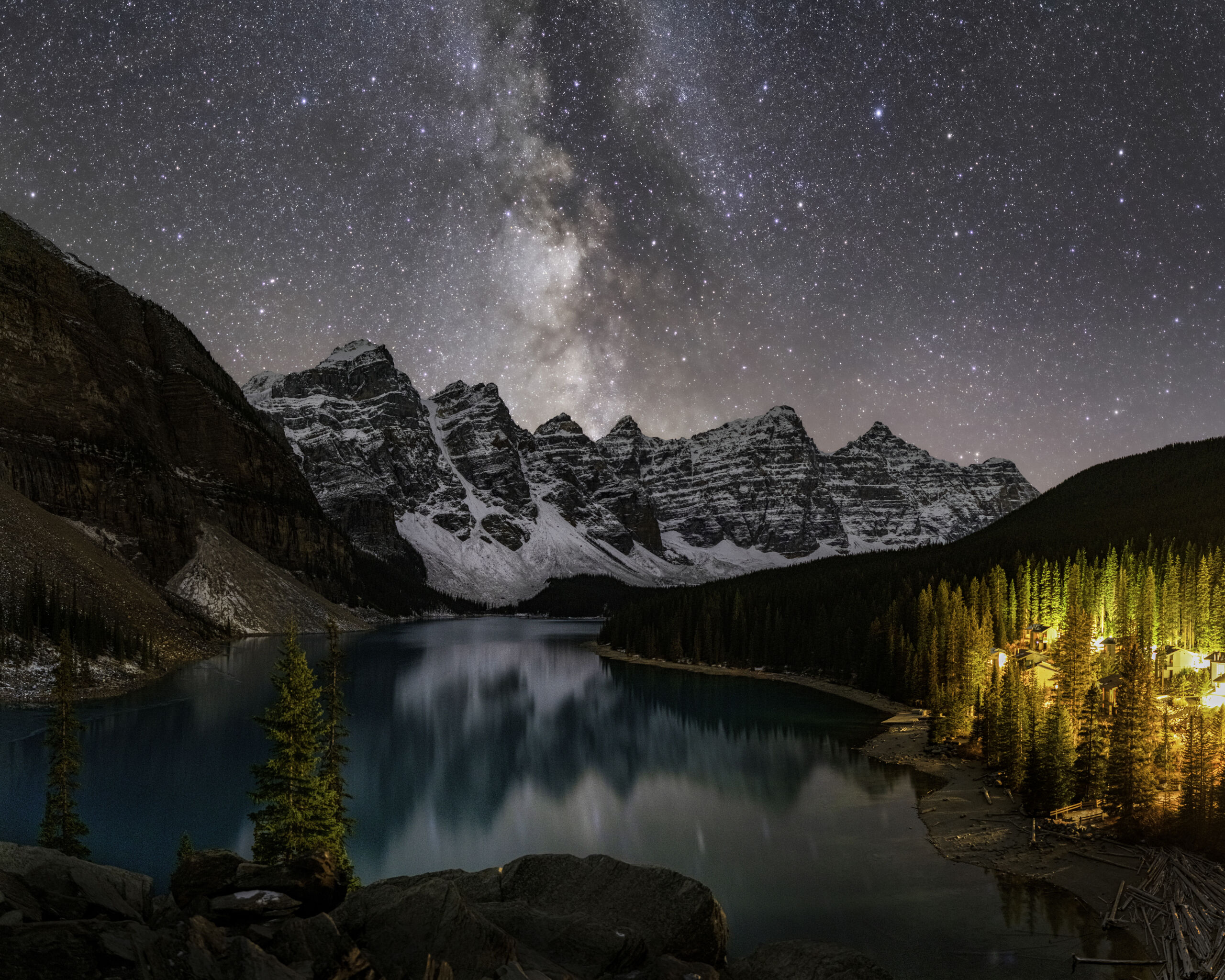
Photo title: Moraine Lake Nightscape
Photographer: Puya Hosseini
Country: U.S.
Location of photo: Moraine Lake, Banff National Park, Alberta, Canada
Story behind the photo: The Moraine Lake Lodge has put a lot of thought and effort into their lighting plan, and this photo demonstrates just how big a difference that can make. I was so impressed after taking this photo I inquired and got confirmation that the following considerations were, in fact, made:
* Minimal external lights with downward-facing dim lights to illuminate pathways.
* Time and length of use of lights – internal lodge lighting features are turned off by 11pm.
* Light orientation – limited visible lighting passing through the glazing to reduce the internal light spill.
* Preference for amber light sources over white ones.
Tehnical information: Stacked/Panorama | Lens: 24mm Sony G-master | Aperture: 1.4 | ISO: Sky – 8000, Foreground – 4000 | Shutter speed: Sky – 8 seconds, Foreground – 20 seconds
Third Place
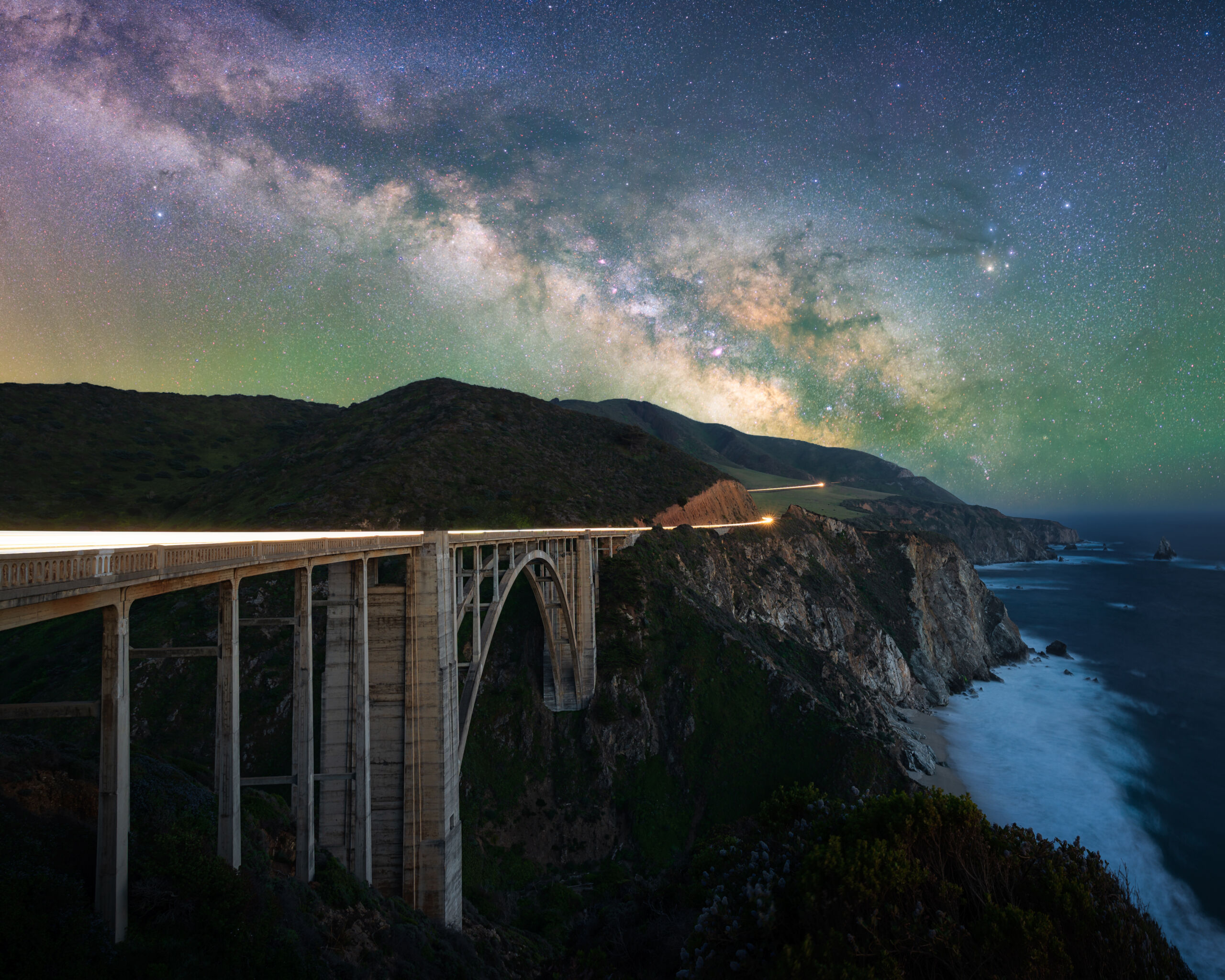
Title of photo: Drive
Photographer: Marcin Zajac
Country: U.S.
Location of photo: Big Sur, California, U.S.
Story behind the photo: Milky Way over the historic Bixby Bridge in Big Sur. This stretch of the California coast features steep cliffs, hidden beach coves, and one of the most spectacular drives one can take anywhere in the world. Thanks to being almost completely undeveloped, there is no light pollution here which makes this a perfect destination for stargazing. The only artificial light illuminating this scene is the lights of the passing cars.
Technical information: Blend/Tracked | Lens: Tamron 15-30 | Aperture: Foreground – 11 Sky – 2.8 | ISO: Foreground – 100 Sky – 800 | Shutter speed: Foreground – 30 seconds Sky – 5 minutes
Creatures of the Night
Light pollution doesn’t only erase our view of the stars, scientific evidence suggests that artificial light at night has negative and deadly effects on wildlife, including amphibians, birds, insects, and mammals.
First Place
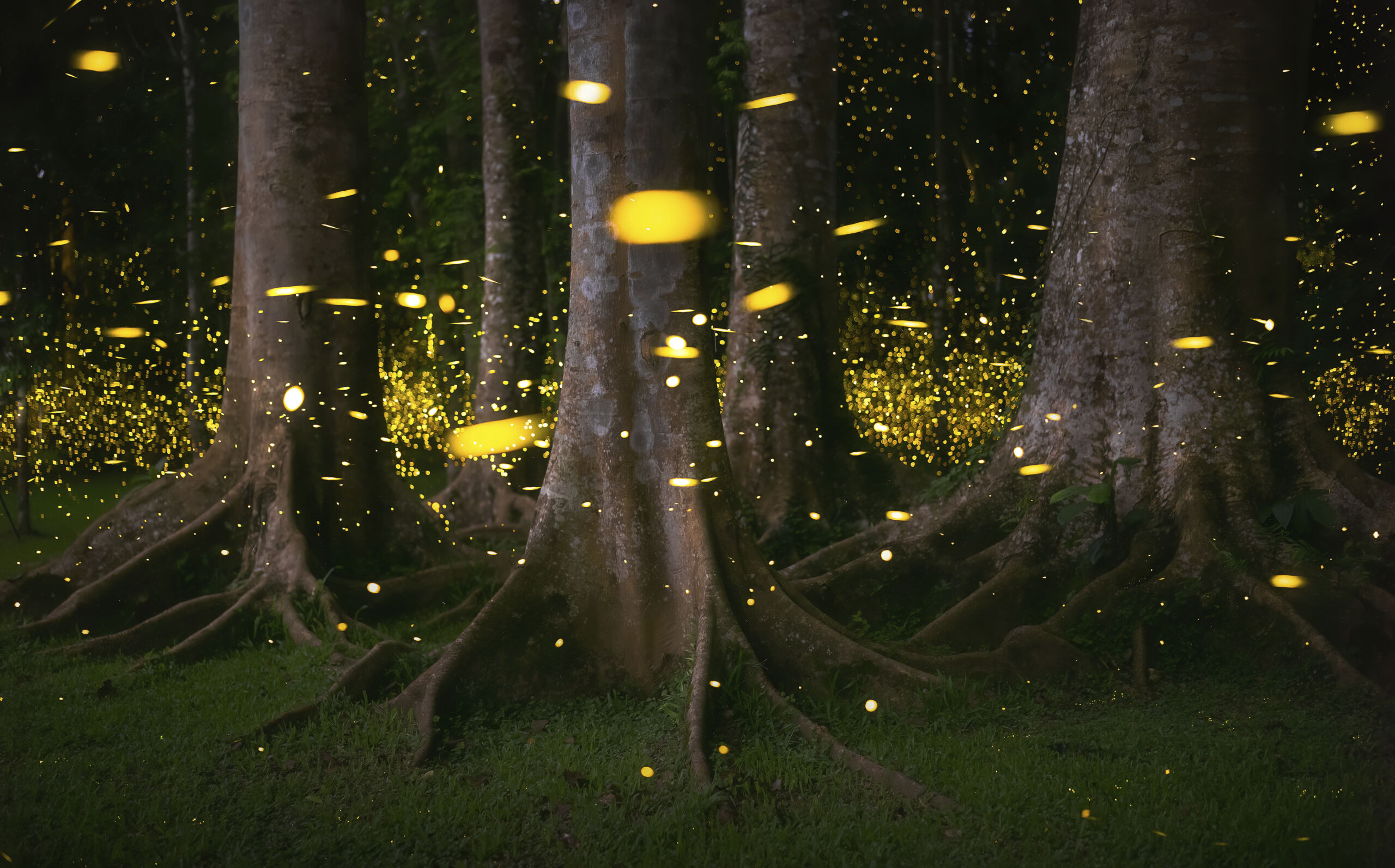
Title of photo: Star Forest
Photographer: Bin Chen
Country: China
Location of photo: Xishuangbanna
Story behind the photo: Twinkle, twinkle, little fireflies: Numerous fireflies gathered in the Xishuangbanna Dai Autonomous Prefecture, southwest China’s Yunnan Province, creating star-like scenery in the forest.
Technical information: Stacked | Lens: 35MM | Aperture: 1.4 | ISO: 4000 | Shutter speed: 30 seconds
Second Place
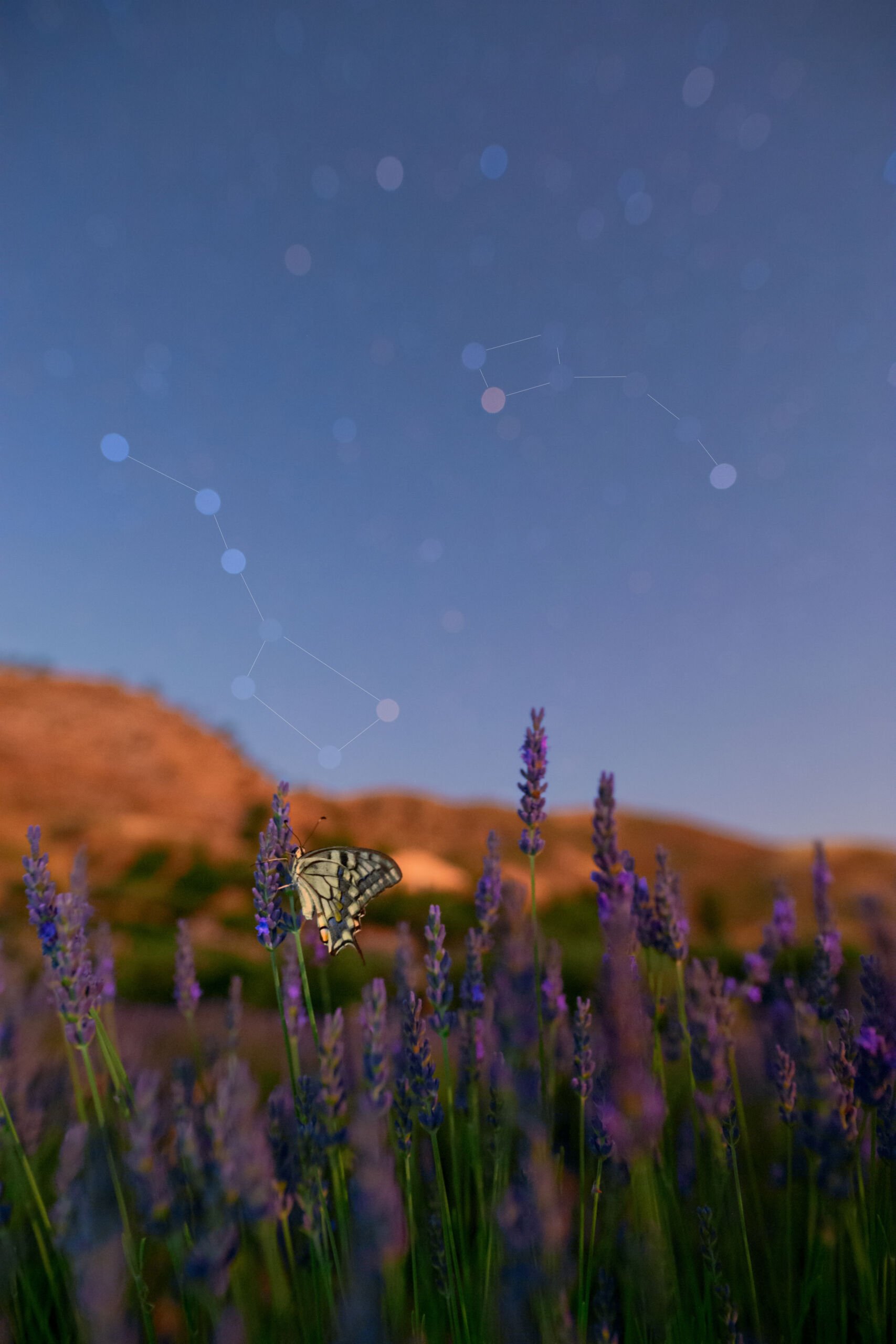
Title of photo: In a Lavender Field As A Butterfly Under The Stars
Photographer: Dario Giannobile
Country: Italy
Location of photo: Santa Caterina Villarmosa – Sicily
Story behind the photo: Insects and animals have always lived in harmony with the cycles of nature, adapting their behavior to the alternation of day and night. Like many other insects, butterflies find a place to spend the night comforted by the darkness or the faint light of the moon. During this period, their vital functions are reduced to a minimum by relying on the night to protect themselves from prey. This image shows a Papilio Machaon resting on an ear of lavender under a starry sky and only partially illuminated by the moonlight. For those who try to be inspired, the image conveys a sense of serenity as you can almost imagine the slow movement of the ears moved by the wind that spreads their persuasive fragrance and the butterfly that lets itself be gently rocked. The focal plane is such as to leave the stars out of focus, but at the same time, this makes the two constellations of the Ursa Major and the Ursa Minor visible. Time passes slowly, and you can almost feel the slow movement of the stars as the butterfly spends its safe rest on the delicate purple flower. The only human element in this photograph is the Greek myth of Callisto, of which the two constellations are a celestial narrative. Nature, unperturbed by human arrogance, expresses her beauty in this shot that becomes the perfect meeting point between micro and macro cosmos.
Technical information: Single exposure | Lens: Sigma art 20 mm f/1.4 | Aperture: 2.8 | ISO: 3200 | Shutter speed: 20 seconds
Third Place
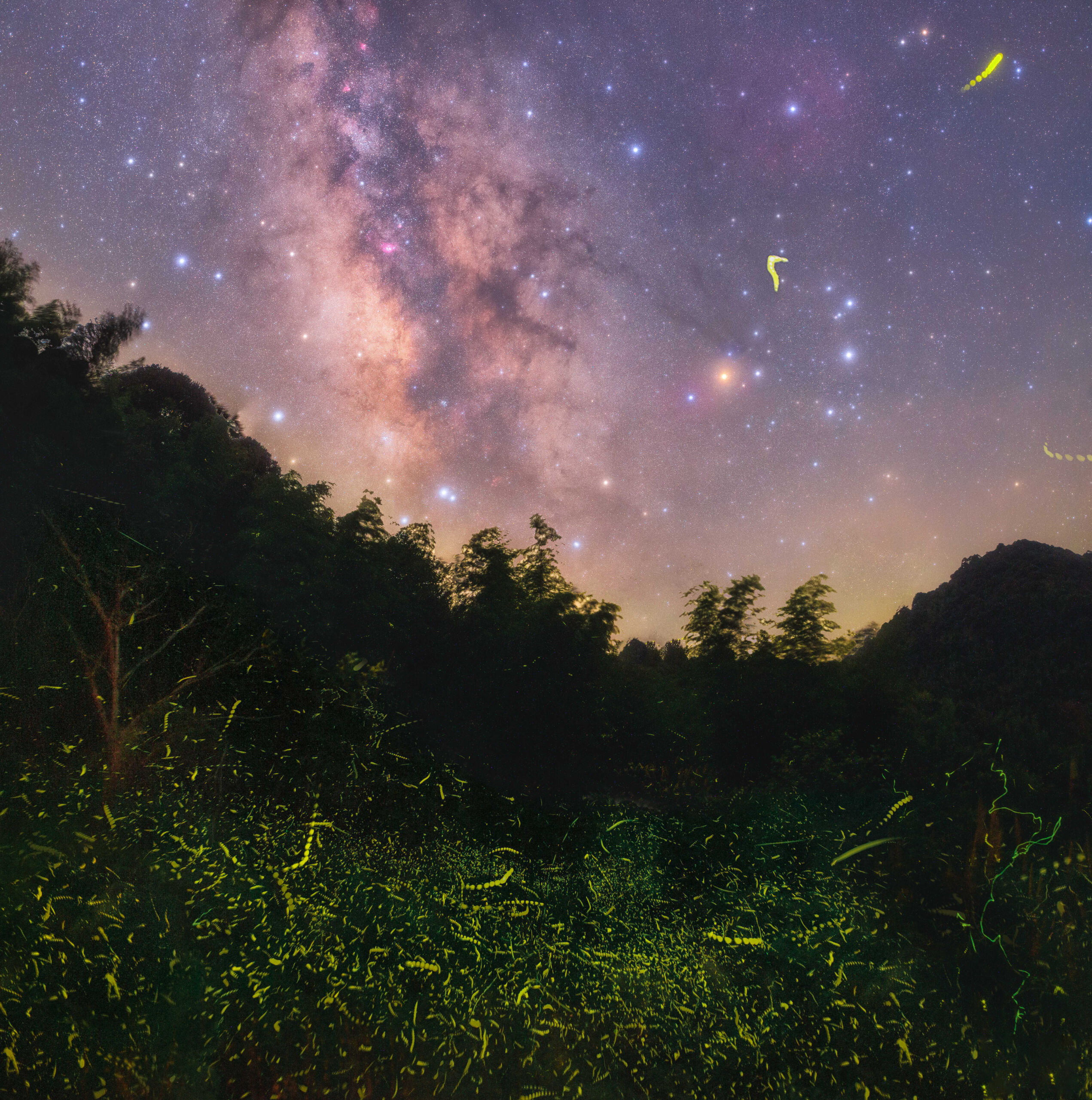
Title of photo: Fireflies with Milky Way
Photographer: Chen Xu
Country: China
Location of photo: Yong’an, Sanming, Fujian
Story behind the photo: I went to the natural reserve at dark, and then I found thousands of fireflies in the woods. They flew around me while some stopped on my T-shirt. It was clear in the sky, and the Milky Way was almost shining there.
Technical information: Blend | Lens: Tarmron SP35mm f/1.4 | Aperture: 1.6 | ISO: 3200 | Shutter speed: 8 seconds
Deep Sky
For thousands of years, humans have looked to the night sky and wondered what is out there. Today, we can take photos of deep space objects from our own backyards.
First Place
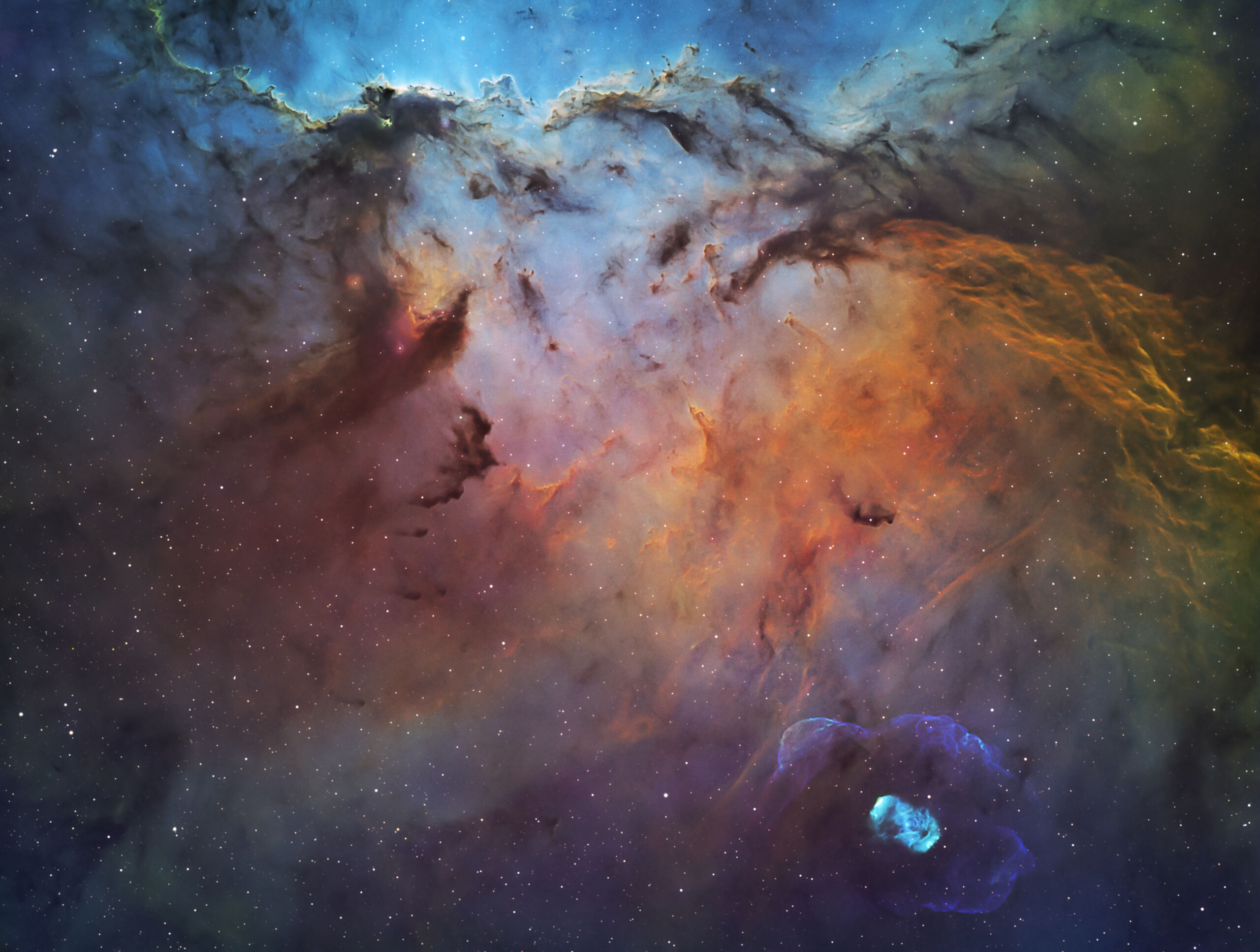
Title of photo: IMMORTAL KOMBAT
Photographer: Shaun Robertston
Country: Australia
Location of photo: Melbourne, Australia
Object imaged: NGC6188 – THE DRAGONS OF ARA
Story behind the photo: NGC 6188, commonly known as “The Dragons of Ara” is found about 4,000 light years away near the edge of a large molecular cloud unseen at visible wavelengths in the southern constellation Ara (the Altar). Massive, young stars were formed in that region only a few million years ago, sculpting the dark shapes and powering the nebular glow with stellar winds and intense ultraviolet radiation.
Technical information: Telescope/Lens: Skywatcher Esprit 100ED | Mount: Skywatcher EQ6R Pro | Filter(s): Antlia 3nm Ha, Oiii and Sii | Software: Astro Photography Tool for image capture and Adobe Photoshop and Pixinsight for editing | Camera used: ZWO 1600GT | Number of frames: 180 | Total exposure (integration) time: 15 hours
Second Place

Title of photo: Cradle of Life
Photographer: Paul Haese
Country: Australia
Location of photo: Swan Reach, South Australia
Object imaged: M78
Story behind the photo: This object is a reflection and dark nebula in the constellation of Orion. It is located 1350 light years from Earth.
Technical information: Telescope/Lens: Orion Optics UK AG12 | Mount: Paramount ME | Filter(s): LRGB | Software: Focusmax 4, CCDautopilot 5, Maxim DL and SkyX | Camera used: QSI83 WSG-8 | Number of frames: 182 | Total exposure (integration) time: 15 hours | Aperture: f3.8 | Shutter speed: 5 minute subs
Third Place
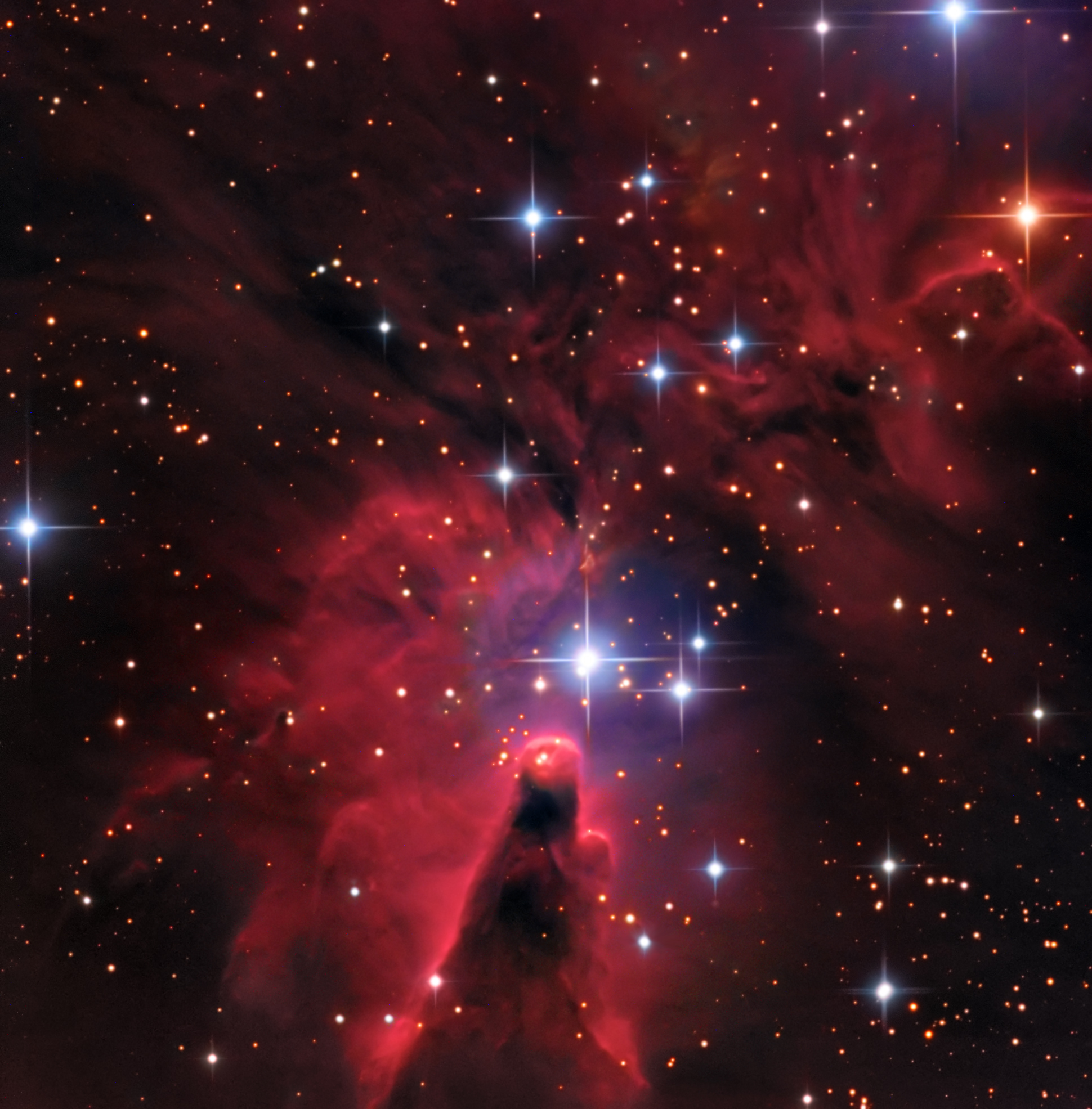
Title of photo: Cone Nebula
Photographer: Bruce Waddington
Country: U.S.
Location of photo: New Mexico
Object imaged: NGC 2264 and surrounding area
Story behind the photo: A rich tapestry of red shows cold hydrogen gas being ionized and illuminated by young, very bright stars.
Technical information: Telescope/Lens Used: 12.5 inch Planewave telescope | Mount: Astro-physics AP900 | Filter(s): Luminance, red, green, blue, Hydrogen-alpha | Software: Self-written | Camera used: Quantum Scientific QSI-640ws | Number of frames: 131 | Total exposure (integration) time: 21.8 hours
The Mobile Photographer
No big camera? No problem! A shot from any of the above categories taken with a cell phone, tablet, or GoPro. No DSLR, mirrorless camera, or drone shots.
First Place
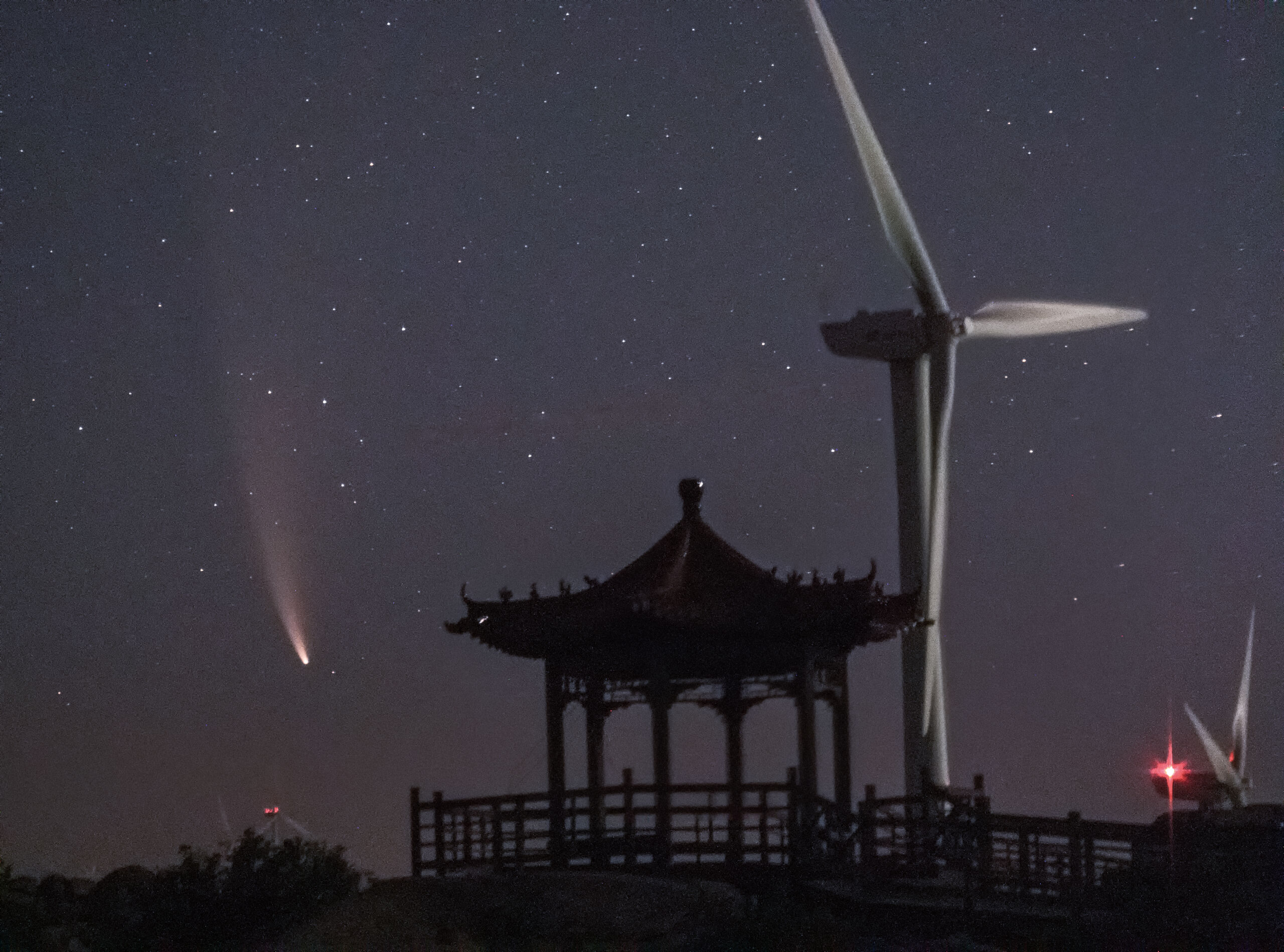
Name of photo: Comet NEOWISE
Name of photographer: Zhaoqi Li
Country: China
Location of photo: Hebei, China
Story behind the photo: I used the 10x long lens of the OPPO Find X2 Pro to capture the magnificent Great Comet.
Technical information: Single exposure | Device make and model: OPPPO Find X2 Pro | Aperture: 3 | ISO: 3200 | Shutter speed: 32s
Second Place
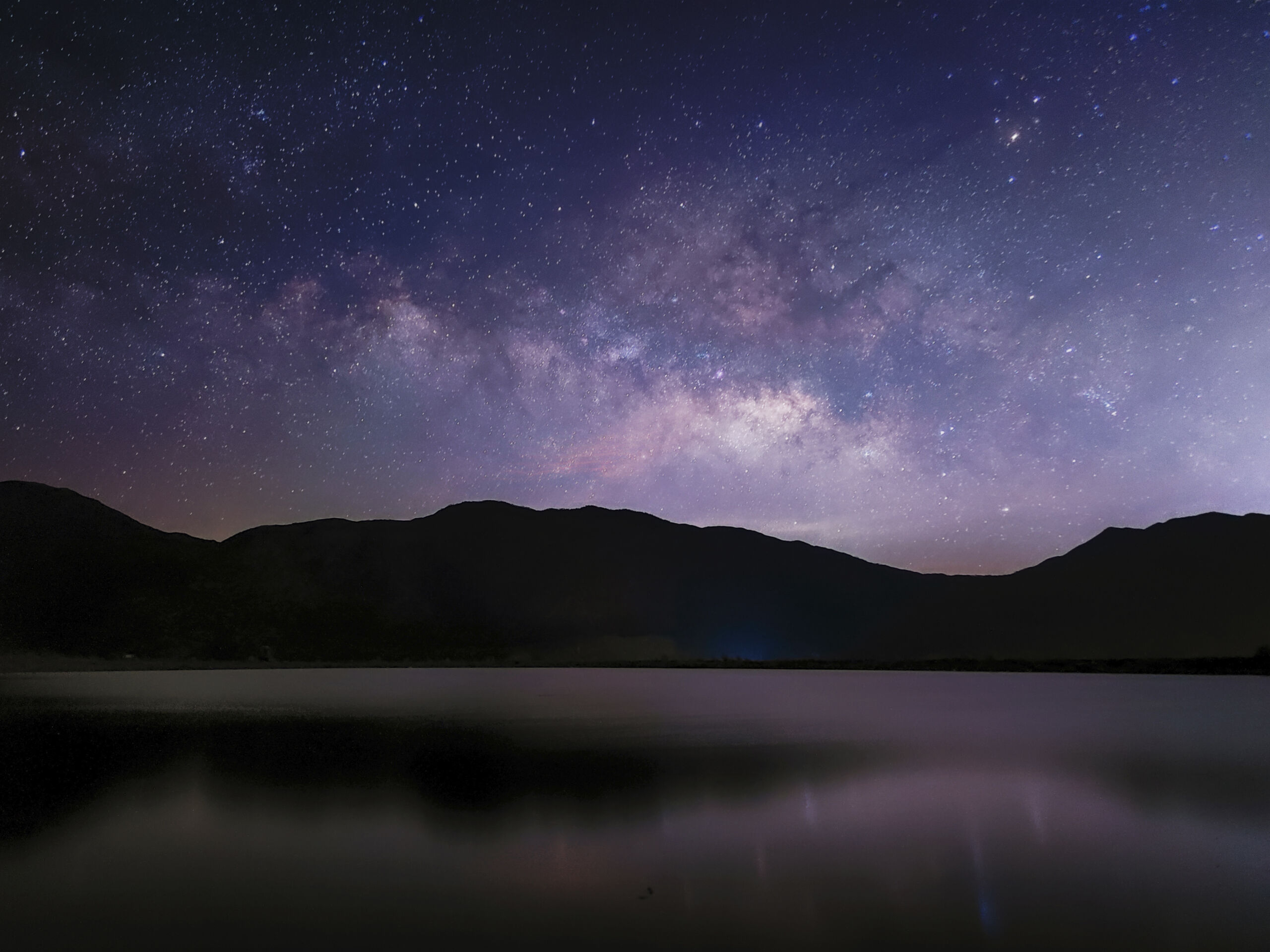
Title of photo: Starlight
Photographer: Bin Chen
Country: China
Location of photo: Lijiang, China
Story behind the photo: When the Milky Way rose, the starlight is reflected in the lake. The dark sky is also illuminated by the twinkle stars.
Technical information: Stacked | Device make and model: Phone(vivo X80 Pro) | Aperture: 1.6 | ISO: 3200 | Shutter speed: 30 seconds
Third Place

Photo title: Neighborhood Watch
Photographer: Vineet Singh
Country: U.S.
Location of photo: Cane Beds, AZ, U.S.
Story behind the photo: This was taken on a trip to Utah. One of the unknown attractions of Utah is the dark skies. This is a single shot taken with my iPhone, of my friend looking through his telescope. I was hoping to capture the milky way spiral. I was surprised to see it also captured our celestial neighbor, the Andromeda galaxy.
Technical information: Single exposure | Device make and model: iPhone 13 pro max | Aperture: 1.5 | ISO: 4000 | Shutter speed: 7.5 seconds
Youth
A shot for any of the above categories taken by someone 17 years old or younger.
First Place
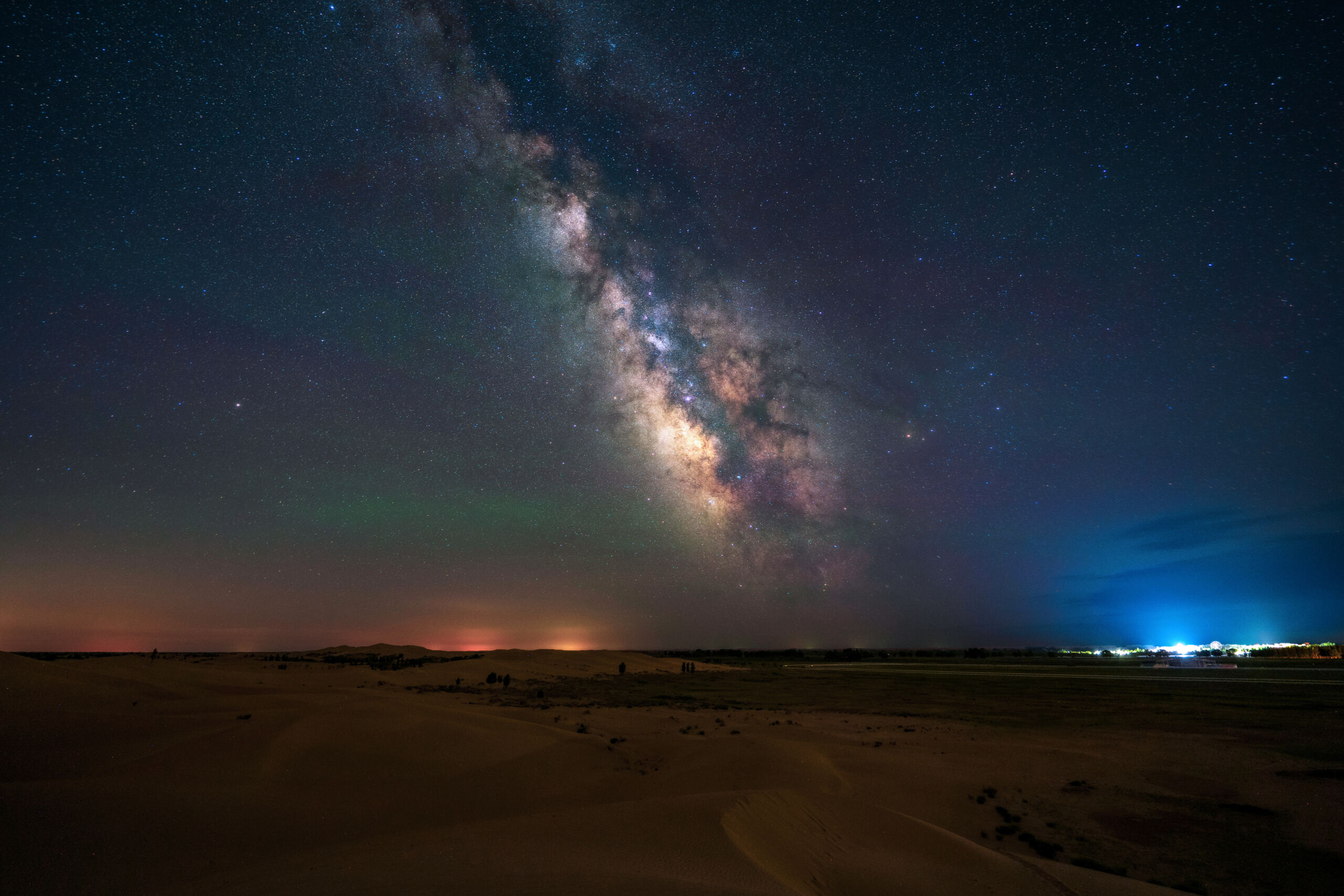
Title of photo: Stars above the desert
Photographer: Jingyi Ma
Country: China
Location of photo: The desert of Kubuqi
Story behind the photo: I went to the desert of Kubuqi during my last summer vacation. The desert of Kubuqi stretches as far as the eye can see, and the Milky Way is like a slightly luminous cloud across the sky, which can not help but let me have a sense of the vastness of the open world. Green airglow beneath the Milky Way adds to the romantic atmosphere.
Technical information: Stacked | Lens: SONY 14mm F1.8 GM | Aperture: 1.8 | ISO: 2500 | Shutter speed: 15s
Second Place
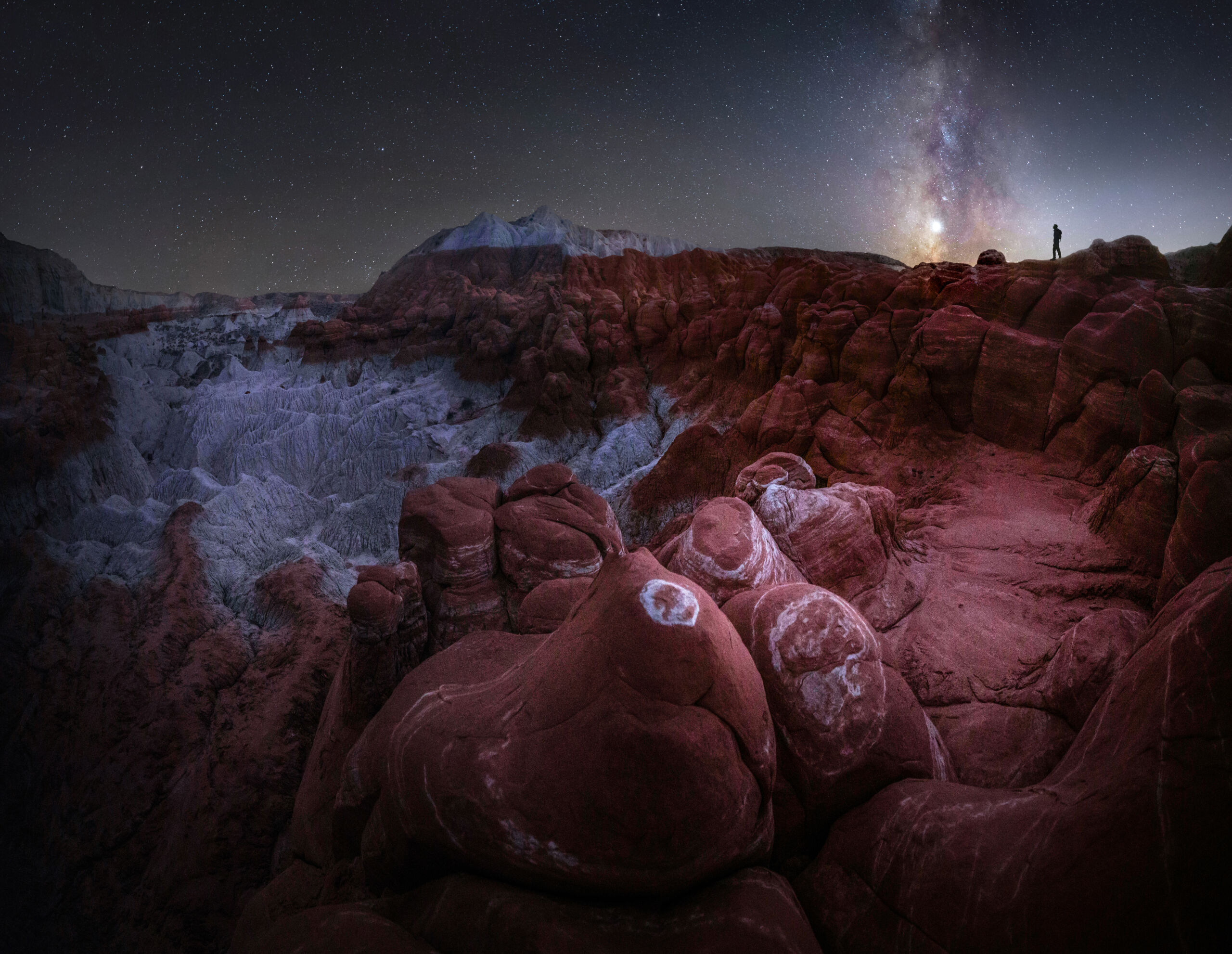
Title: Stargazing in a Martian Landscape
Photographer: Neil Shet
Country: U.S.
Location of photo: Grand Staircase-Escalante National Monument, Utah, USA
Story behind the photo: My brother and I ventured into Grand Staircase-Escalante National Monument to capture a 180 degree panorama of the Paria Rimrocks under the glistening night sky. The landscape was taken during the blue hour, while the Milky Way was taken when it got dark. The red shade of the rocks and the eerie surroundings made me feel like I was on Mars.
Technical information: Blend/Panorama | Lens: Canon 16-35mm f/2.8 | Aperture: 2.8 | ISO: 5000 | Shutter speed: 20 seconds
Third Place
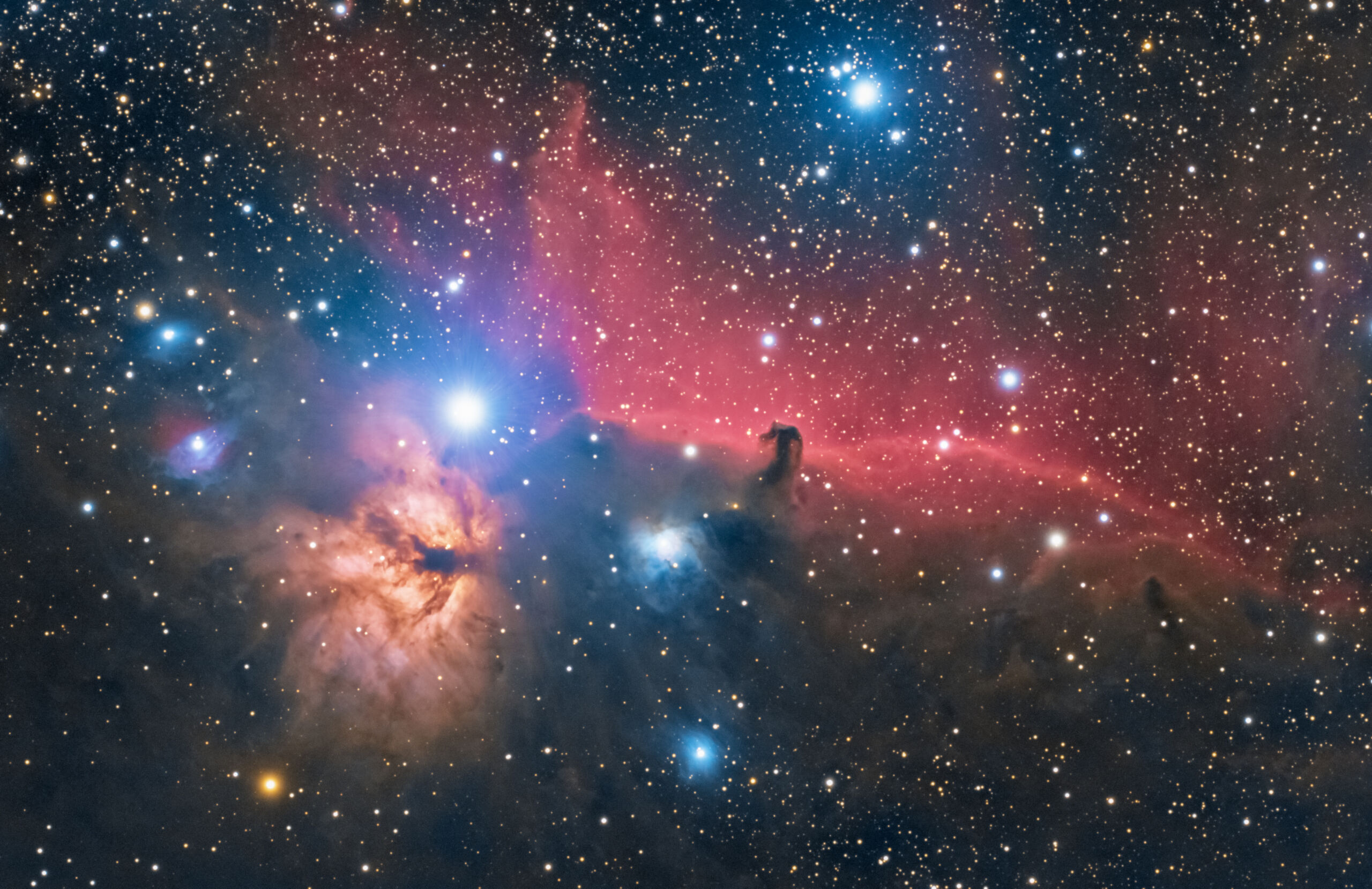
Photo title: A wisp of dust in Orion
Photographer: Haocheng Li
Country: China
Location of photo: Lijiang Yunnan
Story behind the photo: I took this image of the Horsehead Nebula with my telescope when l was 14 in 2021. The Horsehead Nebula is one of the most famous nebulae in the sky. It is visible as the dark indentation to the red emission nebula in the center of the above photograph. On the image left is the Flame Nebula, an orange-tinged nebula that also contains filaments of dark dust. Just to the lower left of the Horsehead nebula featured picture is a blueish reflection nebulae that preferentially reflects the blue light from nearby stars.
Technical information: Telescope/Lens Used: 400mm F/5.6 APO | Mount: Skywatcher HEQ5 | Filter(s): RGB | Software: Pixlnsight | Camera used: asi2600mc | Number of frames: 70 | Total exposure (integration) time: 6 hours
Utah Dark Skies
Presenting Sponsor Visit Utah encourages you to share a photo taken in one of the most popular destinations to capture dark skies — Utah, U.S.
First Place
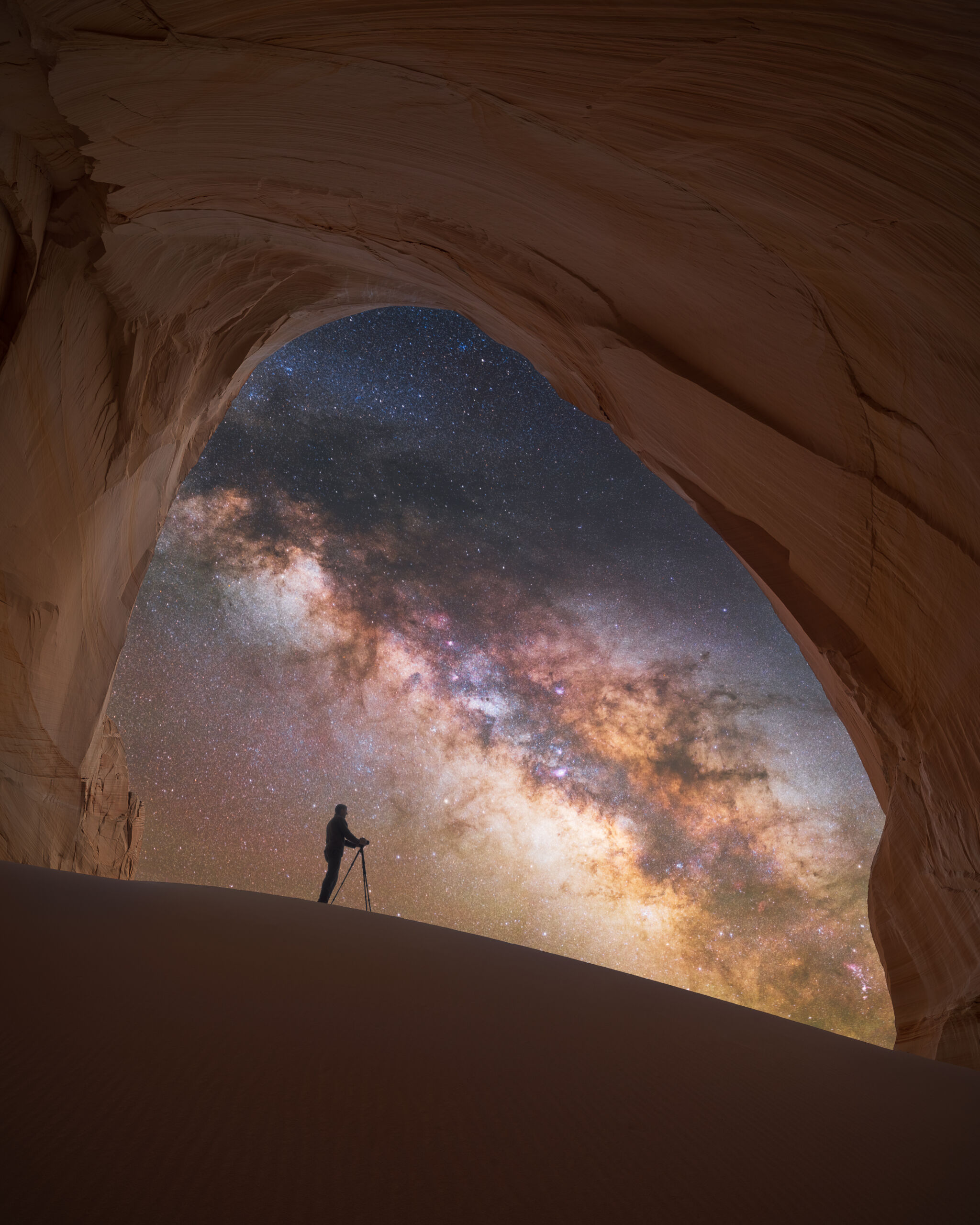
Title of photo: Awestruck
Name of photographer: Marcin Zajac
Country: U.S.
Location of photo: Utah, U.S.
Story behind the photo: An awestruck photographer watching the Milky Way from a massive sandstone alcove in a remote part of Utah.
Technical Information: Blend/Panorama/Tracked | Lens: Tamron 15-30 | Aperture: Foreground – 11 Sky – 1.4 using iOptron SkyTracker Pro | ISO: Foreground – 100 Sky – 400 | Shutter speed: Foreground – 15 seconds Sky – 2 minutes
Second Place
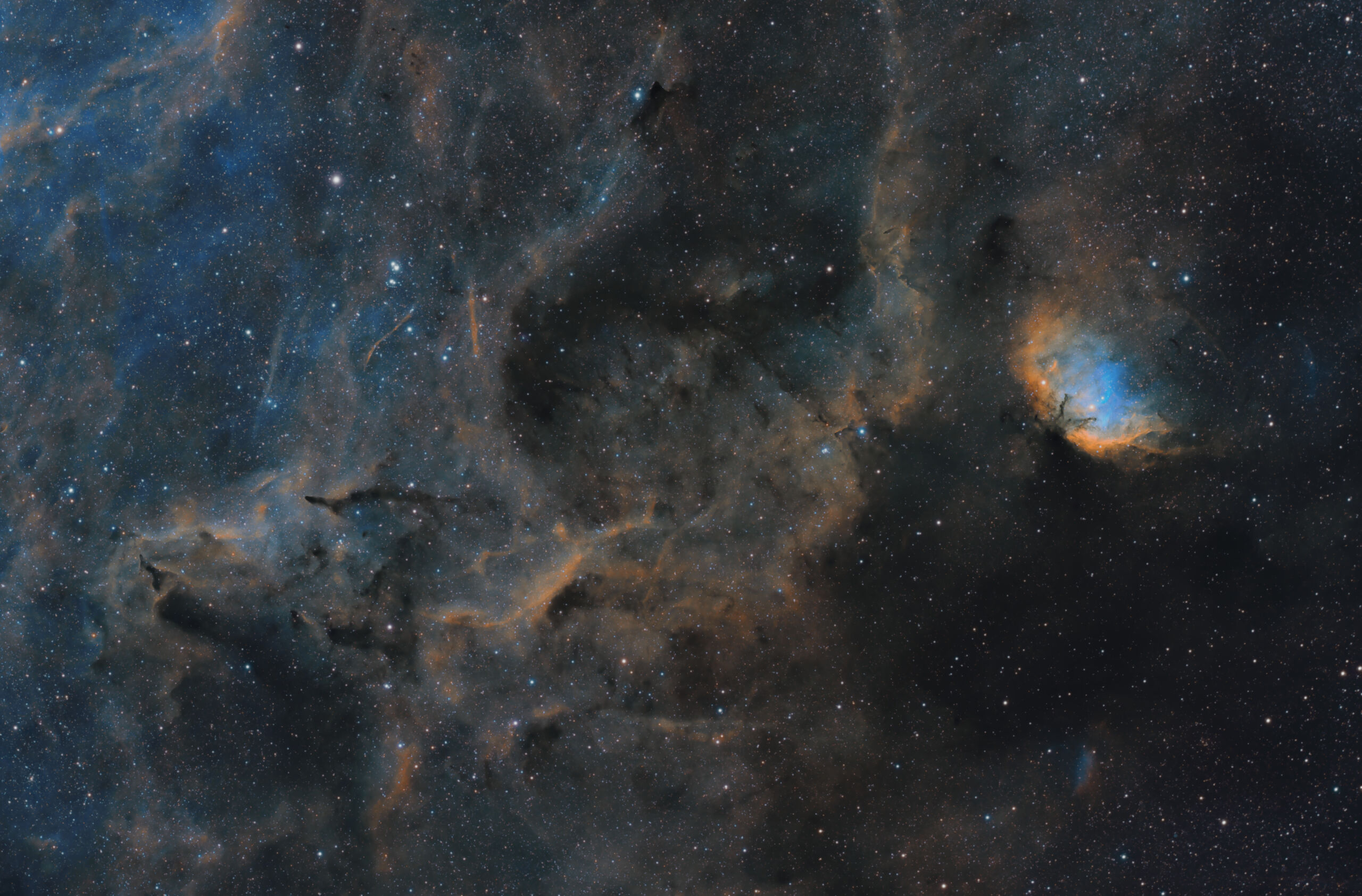
Title of photo: Tulip in Space
Photographer: Chris Freerksen
Country: U.S.
Location of photo: Tooele, Utah, U.S.
Story behind the photo: Tulip Nebula, SH2-101 Taken in SHO narrow-band imaging from my backyard in Tooele, Utah. I enjoy Bortle 4-5 skies from my home in the more rural part of Tooele and do my best to raise awareness for preserving the night sky.
Technical information: Stacked | Lens/telescope used: William Optics WO 102 GT telescope | ISO: 100 gain | Shutter speed: 300 seconds
Third Place
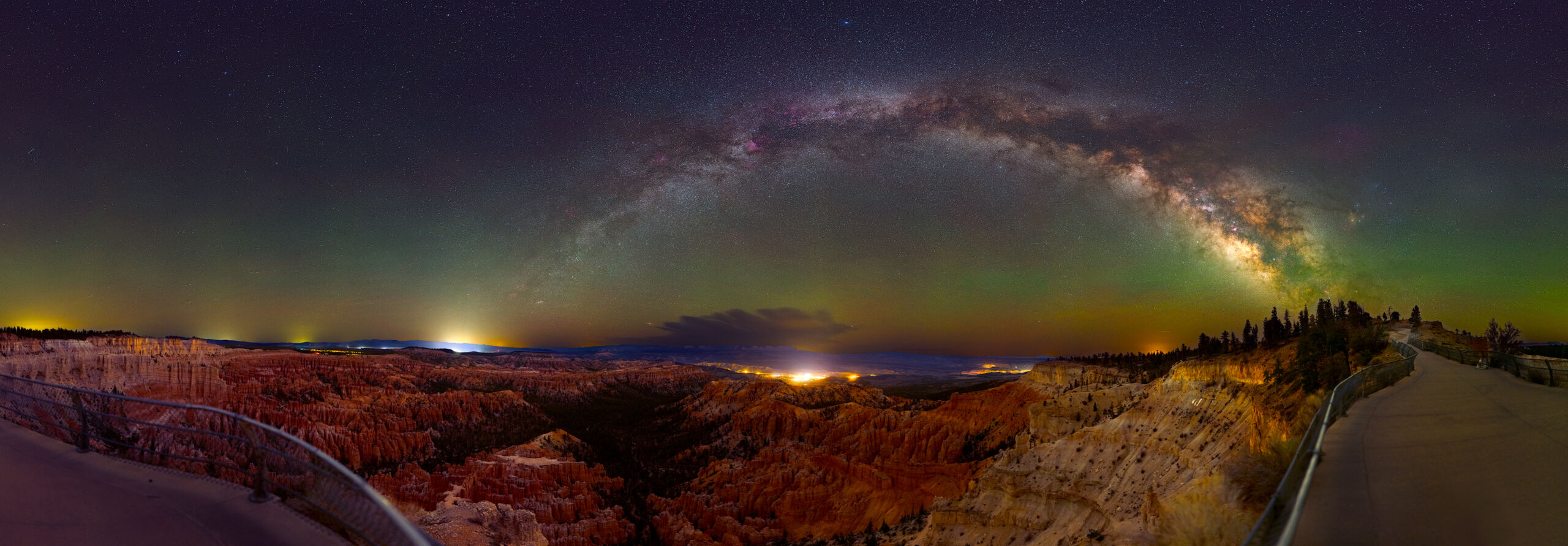
Title of photo: Utah Skies
Photographer: Matt Dieterich
Country: U.S.
Location of photo: Bryce Canyon National Park
Story behind the photo: Visiting Bryce Canyon National Park for the first time after many years dreaming of stargazing there had me wanting to go big. I decided to capture this 120 image panorama to showcase the immense scale of the Milky Way when under the beautiful dark skies Utah has to offer.
Technical information: Single exposure/panorama | Lens: Sony 50mm | Aperture: 1.8 | ISO: 1600 | Shutter speed: 8 seconds
People’s Choice
Chosen by our community of dark sky supporters received the most votes in a public poll.
First Place
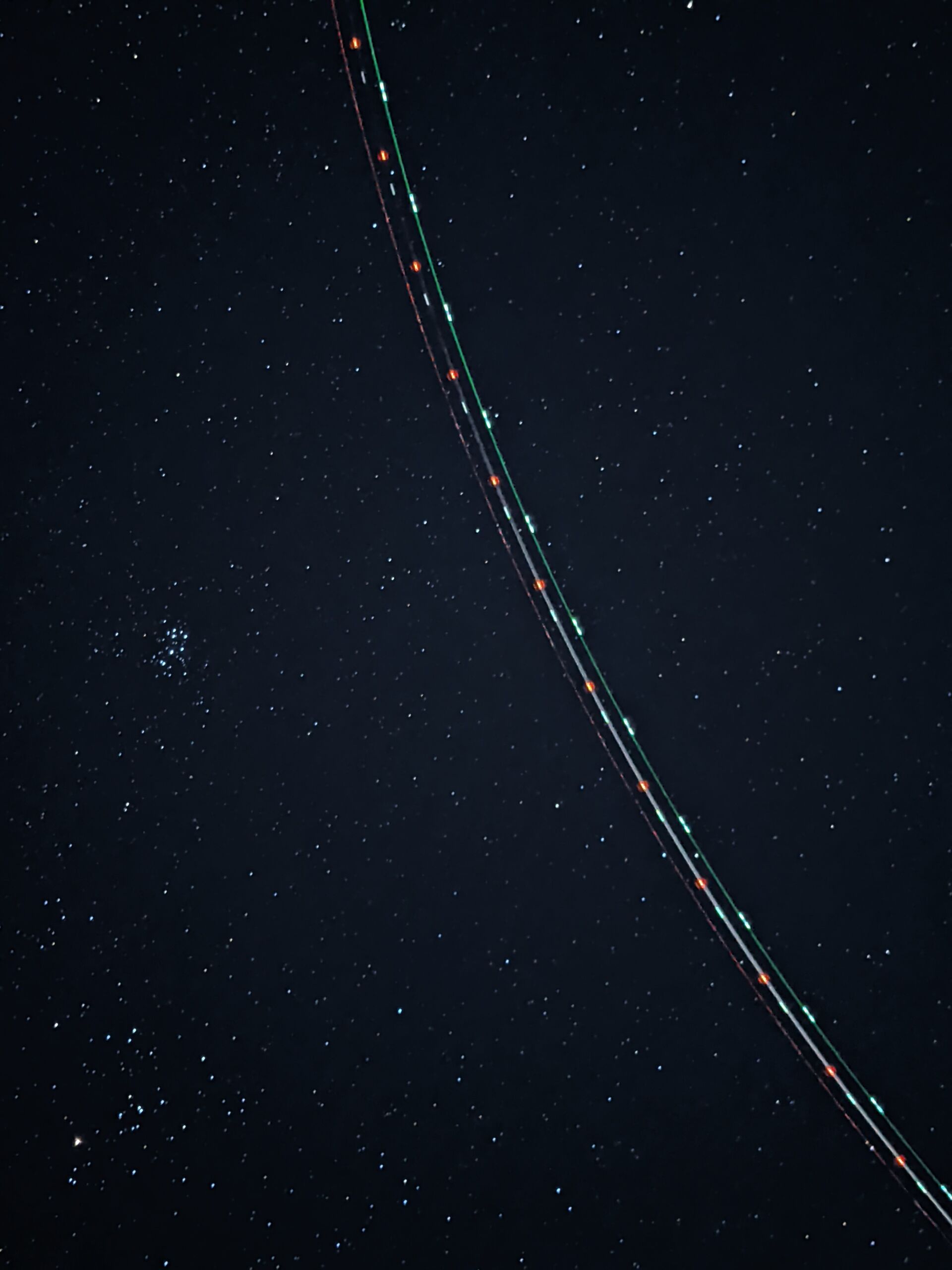
Title of photo: Touring through Taurus
Category: The Mobile Photographer
Name of photographer: Shreya Gupta
Country: India
Location of photo: Nhave, Maharashtra, India
Story behind the photo: The photograph shows an airplane passing just below the constellation of Taurus, leaving behind a trail from its lights. The airplane, a modern man-made marvel, seems to be giving its passengers a tour of the stars which are eternal in comparison and were made by greater, mysterious entities. The picture is a metaphor for curiosity, exploration, and discovery. It connects our little lives to the dark night.
Technical information: Stacked | Device make and model: Google pixel 4a 4G | Aperture: f/1.7 | ISO: 354 | Stack of 15 16-second shutter speed photos
Second Place
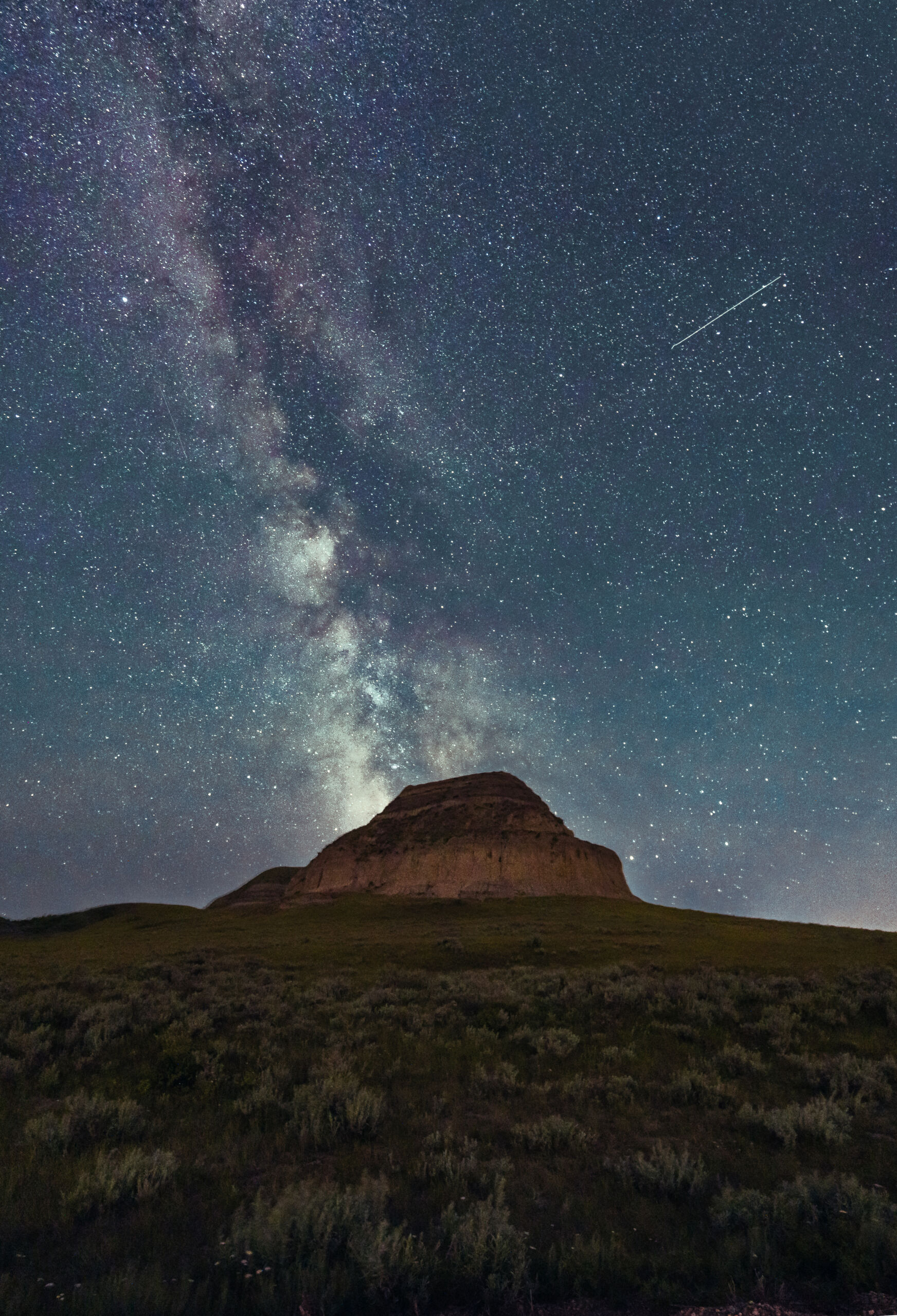
Photo title: Over a Historical Landmark
Photographer: Marian Yauder
Country: Canada
Location of photo: Castle Butte, SK, Canada
Story behind the photo: This relic from the ice age once served as a landmark for the Indigenous people, the North West Mounted Police, and early Canadian settlers. Now located on a private property, the owners open it to the public during the summer season for people to view this natural attraction. We were lucky enough to have the perfect weather when we visited this place and got to enjoy the night sky around it while learning more about Canada’s history.
Technical information: Blend | Lens: Tamron 17-28mm f/2.8 @ 17mm | Aperture: 2.8 | ISO: Foreground – 3200 Sky – 6400 | Shutter speed: 15 seconds
Third Place
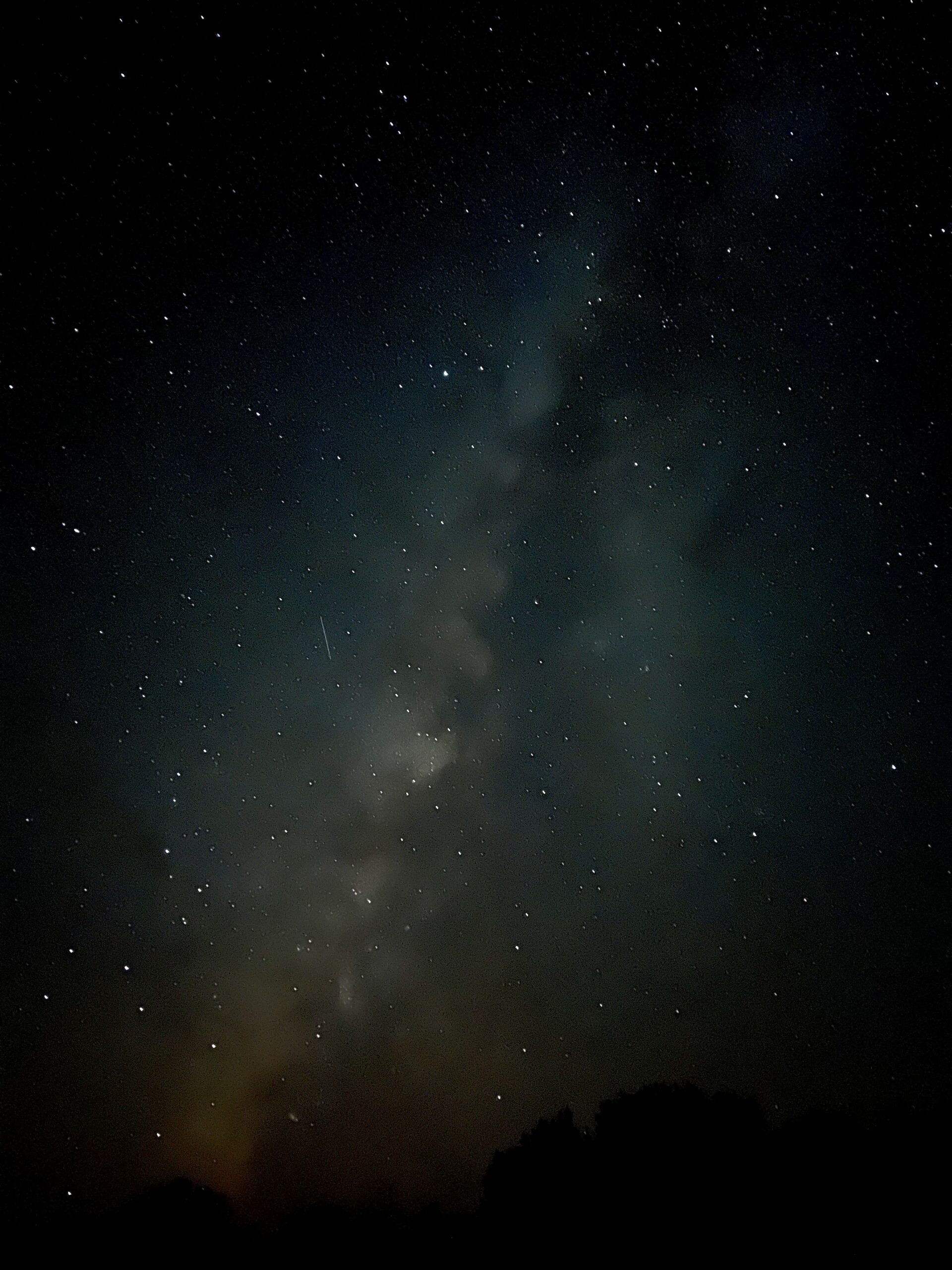
Photo title: Summer nights over the South Llano River
Photographer: Samuel Steele
Category: International Dark Sky Place
Country: U.S.
Location of photo: South Llano River State Park, Texas, U.S.
Story behind the photo: The South Llano River State Park is a certified IDA location. I hiked out into the one of the darkest parts of the park to capture the view from our home of our galaxy. This image helps show why these areas need to stay protected and what we are losing as more artificial light is added around the world.
Technical information: Single exposure | Lens: iPhone 13 mini stock wide camera lens | Aperture: 1.6 | ISO: 5000 | Shutter speed: 30 seconds
Honorable Mentions
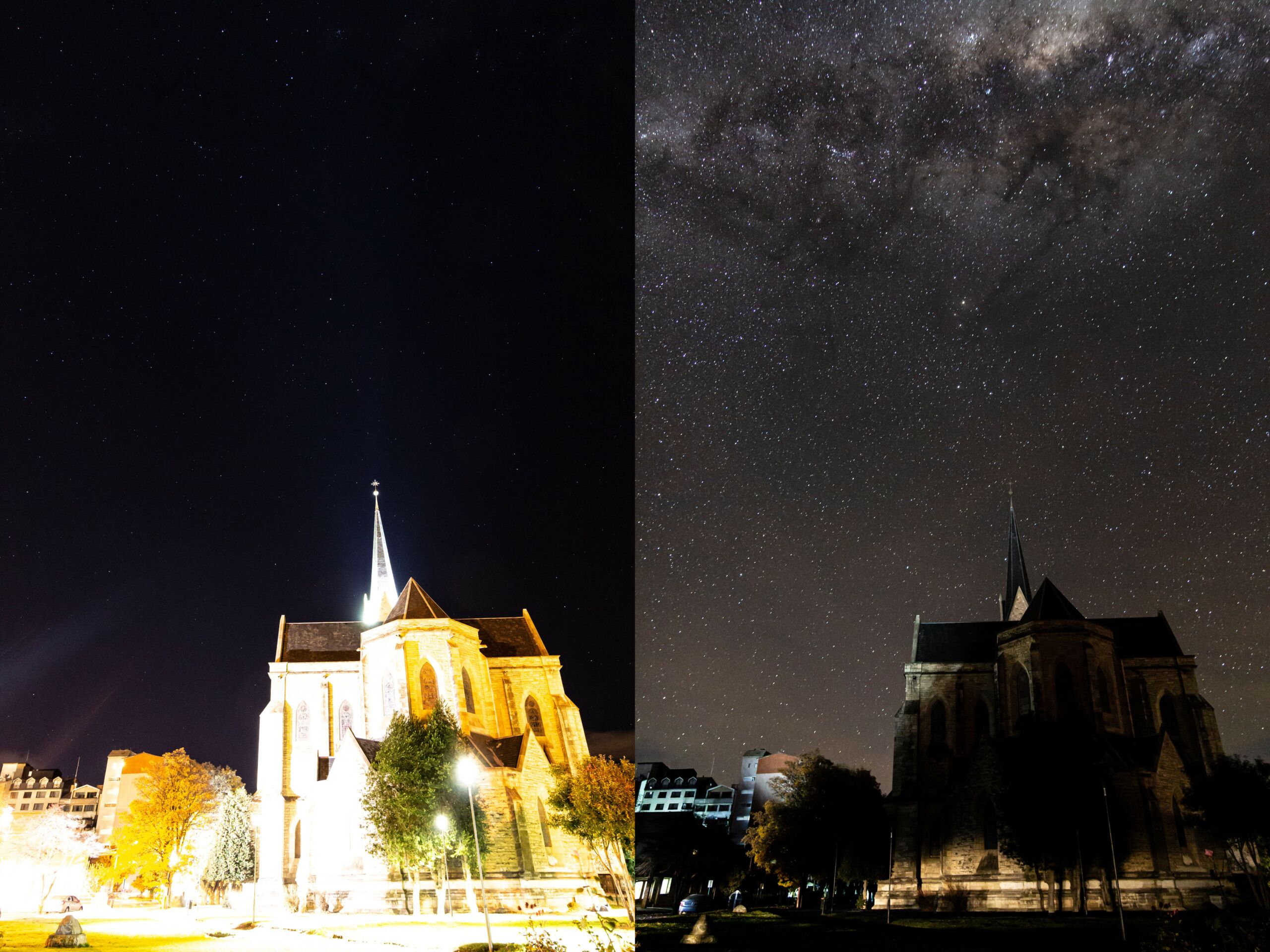
Photo title: Programmed blackout
Photographer: Guillermo Abramson
Category: Impact of Light Pollution
Country: Argentina
Location of photo: Bariloche, Argentina
Story behind the photo: A programmed city-wide blackout at 5 AM was a unique opportunity to show the effect of light pollution in our city. Scorpius was barely visible before, above the needle of the cathedral. When the lights went out, the effect was amazing, it was as if the sky had been “illuminated,” and the Milky Way appeared so bright above the darkened city. The few remaining lights are from cars and safety fixtures, which were much less notable than what appears in the photo.
Technical information: Blend | Lens: Tokina 14-20 at 14 mm | Aperture: 5.6-/2.8| ISO: 1600 | Shutter speed:8 seconds/30 seconds
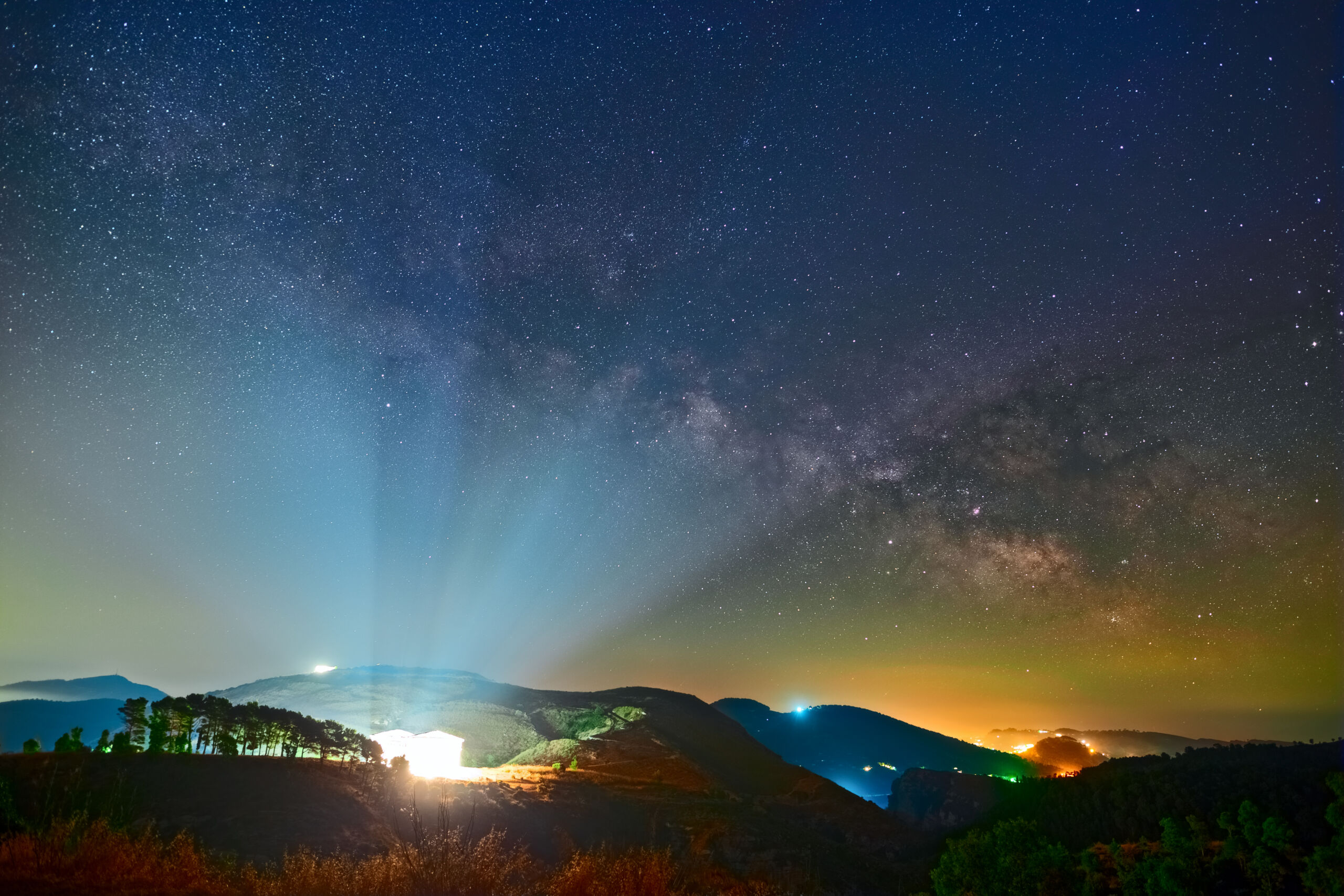
Photo title: Light Pollution Over The Temple Of Segesta
Photographer: Dario Giannobile
Category: The Impact of Light Pollution
Country: Italy
Location of photo: Segesta Temple – Sicily
Story behind the photo: Segesta is one of the most fascinating places in Sicily. Isolated from modernity, the ancient town seems suspended in time. The archaeological park consists of the old urban settlement, the Greek theater where classical representations still take place today and an almost perfectly preserved Doric-inspired temple which has only recently been attributed to Aphrodite Urania or Celestial Aphrodite. Unfortunately, with the advent of LEDs, the previous lighting of the temple was replaced by a new one which, alas, does not help to preserve the spirit of the place that the ancient Elimi inhabitants will surely have lived. The LEDs that illuminate the temple are too intrusive to the point of projecting light beams into the sky such as to dominate the soft light of the stars and the Milky Way. I do not think this choice was made with full knowledge of the facts but I believe it was made with the noble intention of enhancing the temple at night without fully understanding the implications around the choice. For this reason it is necessary to discuss and bring to the attention of administrators the need to preserve the sky so that our children can enjoy the beauty of the universe.
Technical information: Stacked | Lens: Sigma art 20 mm f/1.4 | Aperture: 2.2 | ISO: 1600 | Shutter speed: 10 seconds

Photo title: If you turn off the lights
Photographer: Jesus Acosta
Category: The Impact of Light Pollution
Country: U.S.
Location of photo: Iowa State University Central Campus, Iowa, U.S.
Story behind the photo: The first photo was taken in a “normal day” second photo was taken exactly one year earlier during a power outage after a derecho storm, same camera settings.
Technical information: Blend | Lens: Default lens of compact camera: Canon PowerShot G9 X Mark II | Aperture: 2.0 | ISO: 800 | Shutter speed: 30 seconds
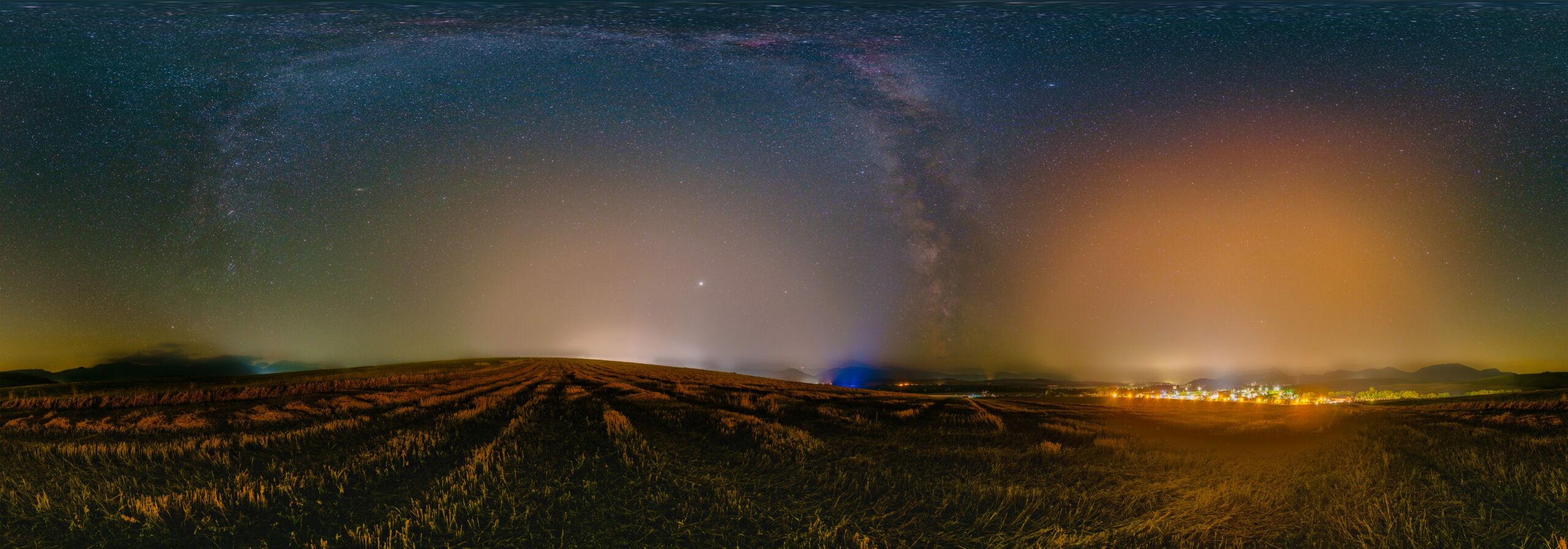
Photo title: Milky Way between two millstones of Light Pollution
Photographer: Lubomir Lenko
Category: The Impact of Light Pollution
Country: Slovakia
Location of photo: Holiday Village Tatralandia – near city Liptovsky Mikulas in Slovakia
Story behind the photo: Milky Way between two light pollution spheres. Enjoy it 360° VR panorama view. Photo has been taken near Holiday Village Tatralandia and near the city Liptovský Mikuláš – the center of region Liptov. This region contains a lot of tourist places like dam Liptovská Mara (is the first dam of the Váh cascade) with a lot of national parks like Vysoké Tatry, Nízke Tatry, Západné Tatry … But we have in this place a lot of light pollution an als a lot of unsuitable light sources directed into the starry sky. So the photo contains a lot of color gradients from different types of light sources. Despite that, I hope that the result will also be liked.
Technical information: Blend | Lens: Samyang Lens Global 12mm f/2 NCS CS Fujifilm | Aperture: 2 | ISO: 800 | Shutter speed: 60 seconds
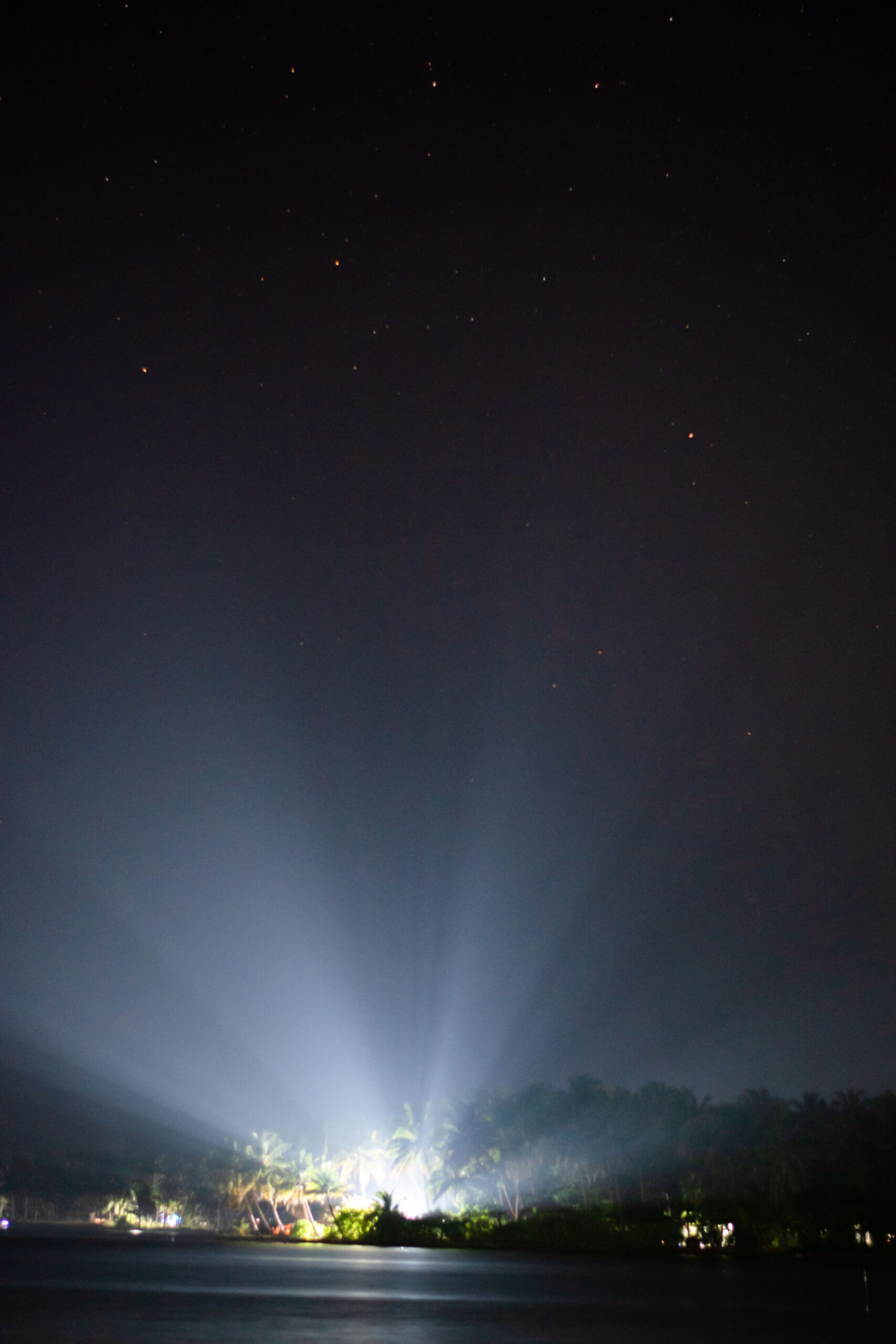
Photo title: Island Party and The Lost Stars
Photographer: Rohith K A
Category: The Impact of Light Pollution
Country: India
Location of photo: Payyanur, Kerala, India
Story behind the photo: I went to the riverside in that December night to capture Comet Leonard (C/2021 A1). But there it is – A night party in the private coconut island! High beams of light coming out of the island, penetrating the dark sky. Still, I tried a long exposure shot to see how much I would get. And the result is this. Rather a perfect example of how artificial lights eat out beautiful dark night skies.
Technical information: Single exposure |Lens: Nikor 50mm Prime Lens | Aperture: 1.8 | ISO: 1600 | Shutter speed: 5 seconds

Photo title: Light over light
Photographer: Jingyi Zhang
Category: The Impact of Light Pollution
Country: China
Location of photo: Iceland
Story behind the photo: The photo was taken in Iceland. An aurora is depicted as a bridge over the lights of the town. Orion is drowning in a sea of city lights and auroras.
Technical information: Blend | Lens: 14mm | Aperture: 2 | ISO: 10000 | Shutter speed: 2.5 seconds
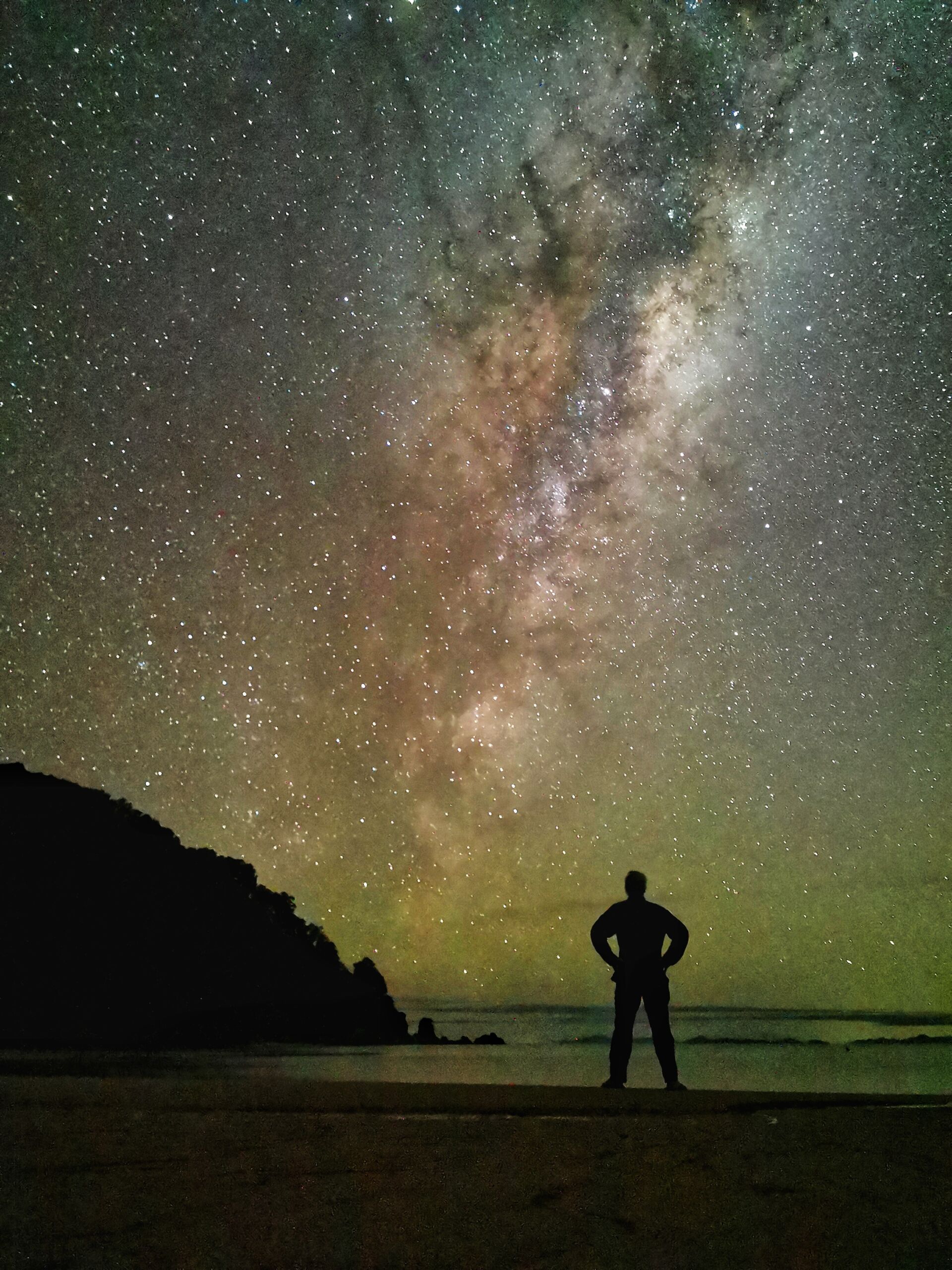
Photo title: Thankyou
Photographer: Greg Stevens
Category: The Mobile Phiotographer
Country: New Zealand
Location of photo: Totaranui
Story behind the photo: While camping at a remote part at the top of the South Island New Zealand, I got up after midnight to spend some alone time under the stars. I enjoyed the solitude, reflecting on where this wild journey we call life has taken us all, especially over the past few years, and admiring the beauty and immensity of what my eyes could see. All my problems seemed to melt away. While I was shooting with my DSLR, I found a spot on the beach where the Milky Way and Galactic Kiwi were easy to see and admire. I decided to a quick selfie with my Huawei P30Pro phone.
Technical information: Single exposure | Device make and model: Huawei P30Pro | Aperture: 1.6 | ISO: 5000 | Shutter speed: 20 seconds
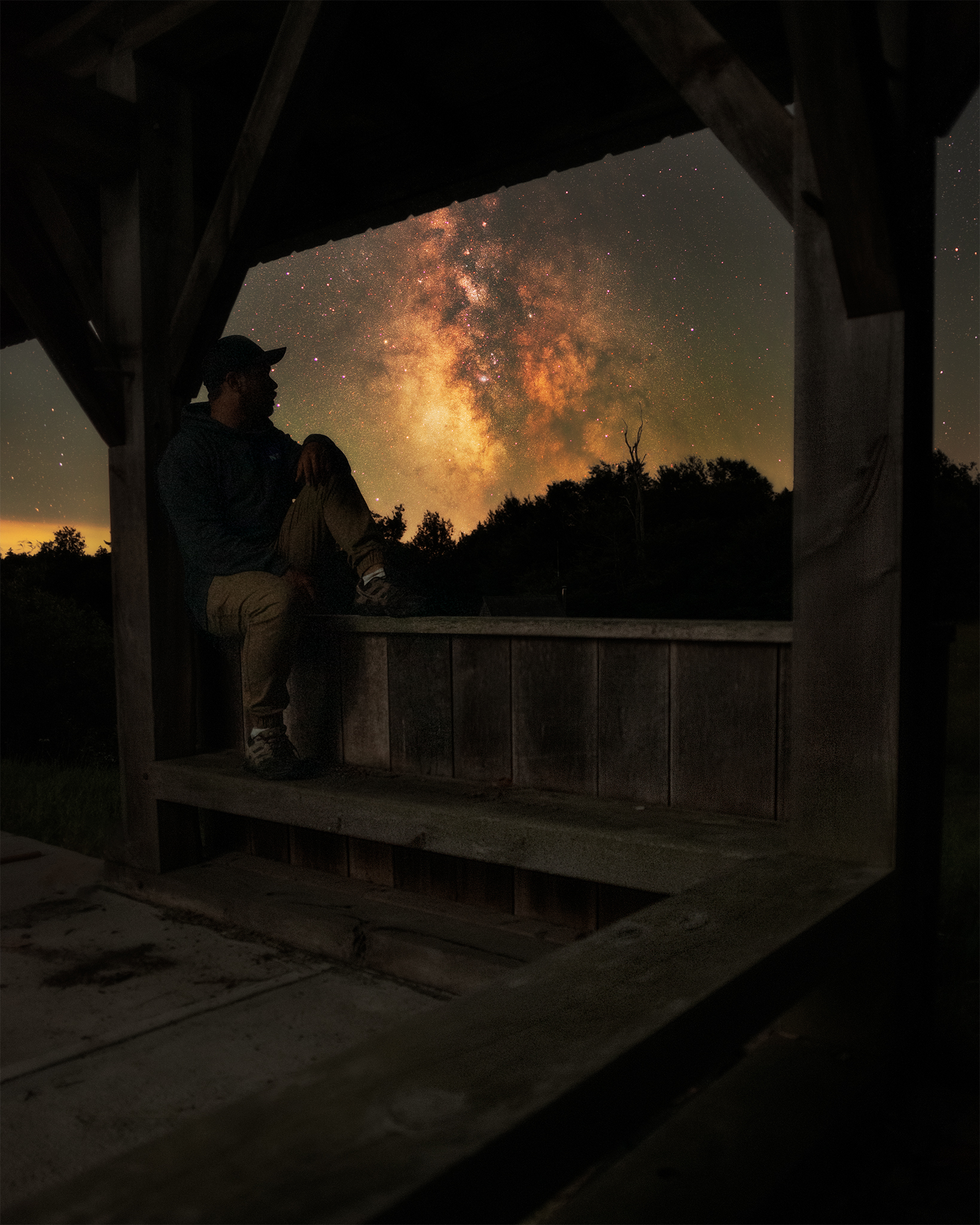
Photo title: Never Stop Looking Up
Photographer: John Nardacci
Category: Connecting to the Dark
Country: U.S.
Location of photo: Arunah Hill, Cummington, MA
Story behind the photo: I’ve had this shot in my head for about 2 years or so. I just hadn’t returned to one of my favorite “local” spots, Arunah Hill in Cummington, MA, to capture it. A couple of years back, after shooting the “club house” building and the telescope building on the hill, I had realized right as we were leaving that the pavilion would line up with the Milky Way core as well! It was to late to get a shot at that point but I told myself I would get a shot looking through the inside of the pavilion and make it self portrait… Fast forward a couple of summers later, and here we are; my friend Ryan and I were discussing possible locations for June’s new moon, and when we decided on Arunah Hill, at first, I was worried because I had shot the few buildings at this location many times prior and I wasn’t totally sure what I was going to shoot but all the sudden the idea came right back to me, I was pretty excited to make this image finally happen. I enjoy making these self-portraits under the stars, and this is by far my favorite one! They are a reminder to me of how lucky we all really are to be alive, right now at this point in time, on this giant rock, hurling through space in this ever expanding universe. That’s why I love shooting astrophotography; the perspective can really help ground me and help stop me from sweating the small stuff in life. This image is also a reminder to me of what an amazing night we had capturing the Milky Way and star gazing. That night on the drive up there we saw an owl and then heard them all night around us calling out to each other. This was a perfect New England summer night for sure, and trips like this keep me motivated to keep pushing myself to get out there and enjoy the night sky more!
Technical information: Blend/Stacked/Tracked | Lens: Canon EF 24mm f2.8 | Aperture: Foreground – 2.8 Sky – 3.5 | ISO: Foreground – 8000 Sky – 1600 | Shutter speed: Foreground – 30 seconds, 10 images stacked w/one image of self at 15 seconds blended in Sky – 2 minutes, 6 images stacked
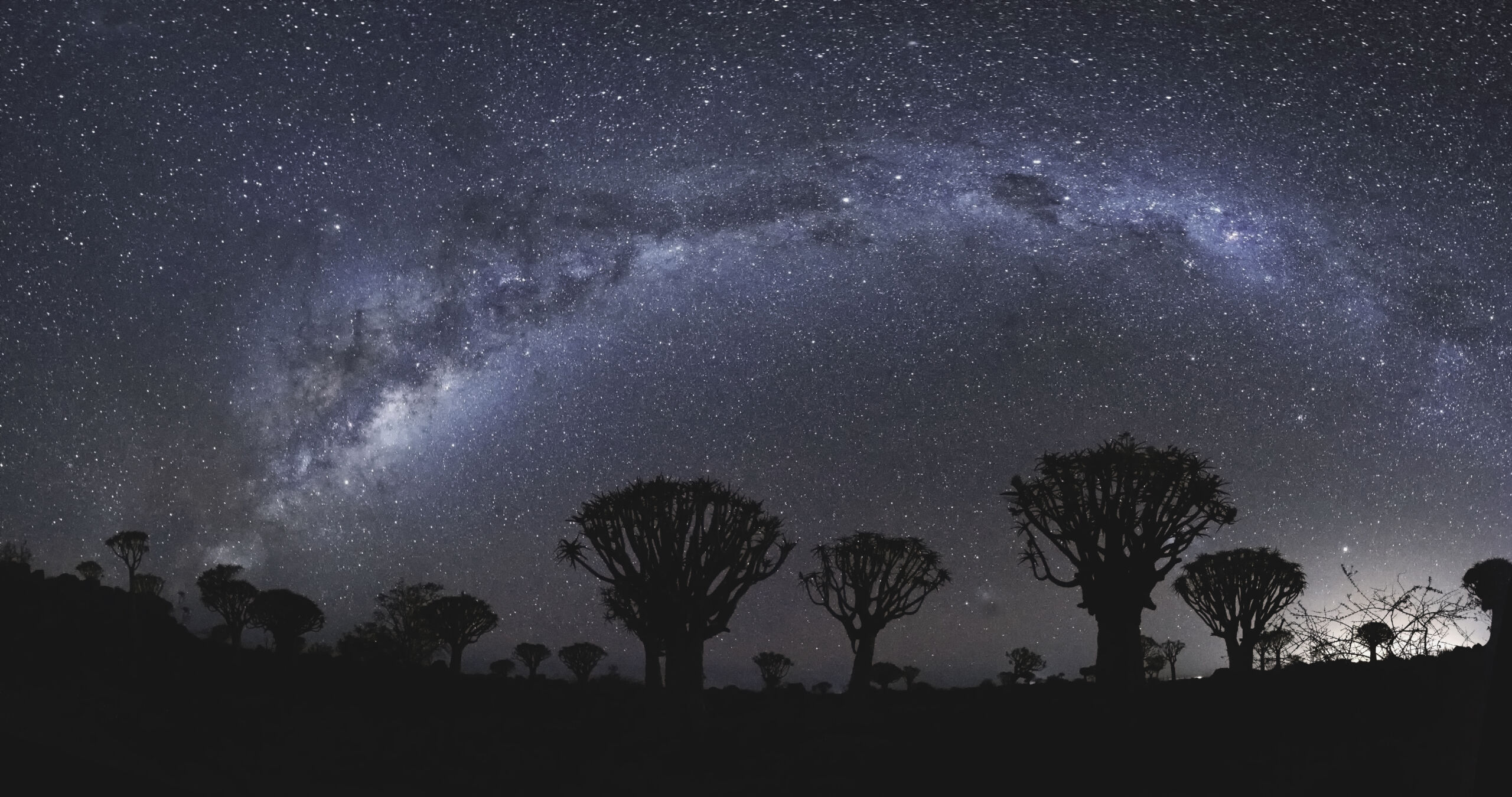
Photo title: Namibia night sky
Photographer: Jian Hong Wang
Category: International Dark Sky Place
Country: China
Location of photo: Namibia
Story behind the photo: Namibia Windhoek quiver manor campsite shot
Technical information: Blend | Lens: Fujifilm 10-24 | Aperture: 4 | ISO: 6400 | Shutter speed: 28 seconds
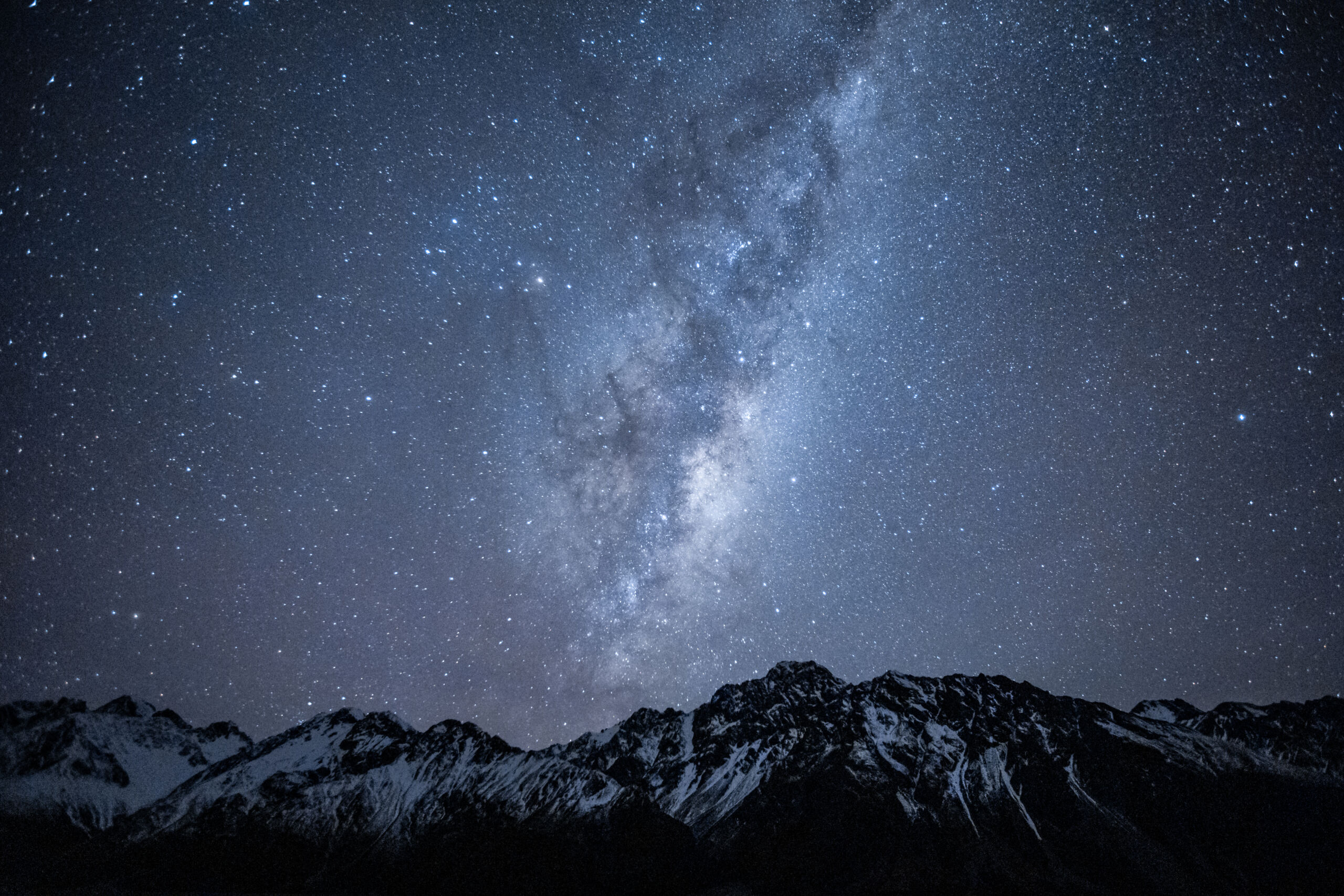
Photo title: Tasman Valley Milky Way
Photographer: Melanie White
Category: International Dark Sky Place
Country: New Zealand
Location of photo: Aoraki Mount Cook National Park
Story behind the photo: This photograph of NZ’s mid-winter milky way was captured under the mountains in the Tasman Valley of Aoraki Mount Cook National Park. Aoraki is located in part of the Mackenzie Dark Sky Reserve, where New Zealands’ clearest skies can be found and are best for viewing the night sky in great detail.
Technical information: Single exposure | Lens: 16-35mm | Aperture: 2.8 | ISO: 6400 | Shutter speed: 25 seconds
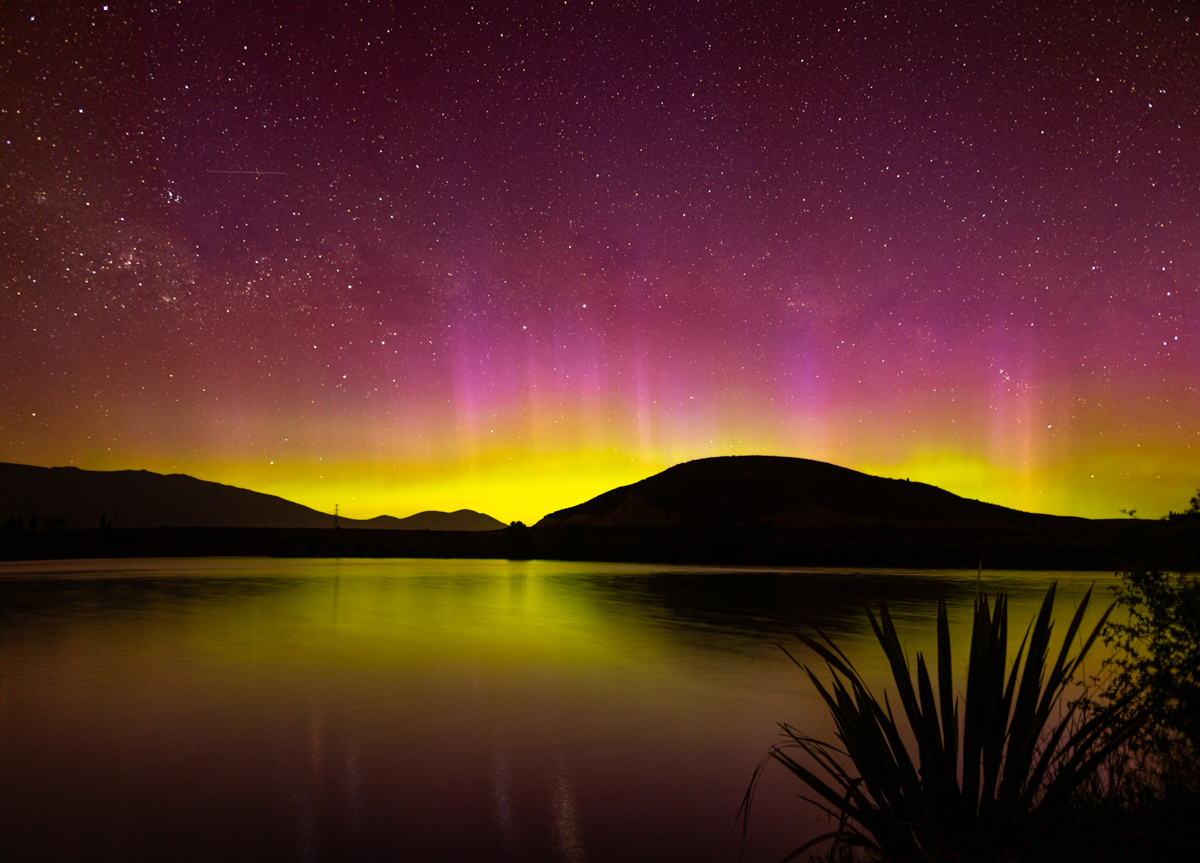
Photo title: Lake Ruataniwha Aurora
Photographer: Ian Riddler
Category: International Dark Sky Place
Country: New Zealand
Location of photo: Twizel, New Zealand
Story behind the photo: Taken in the Aoraki Mackenzie International Dark Sky Reserve in New Zealand.
Technical information: Single exposure | Lens: Sigma Art 24mm | Aperture: 1.4 | ISO: 500 | Shutter speed: 13 seconds

Photo title: American Life – An Urban Night
Photographer: Kelly Davenport
Category: The Bright Side of Lighting
Country: U.S.
Location of photo: Louisville, Kentucky
Story behind the photo: The light surrounding this downtown office building, near an urban park, is directed down. It’s not contributing to additional light pollution, and it’s safer because it’s not producing an unwanted glare.
Technical information: Single exposure | Lens; Nikon 35mm Prime | Aperture: 11 | ISO: 100 | Shutter speed: 13 seconds
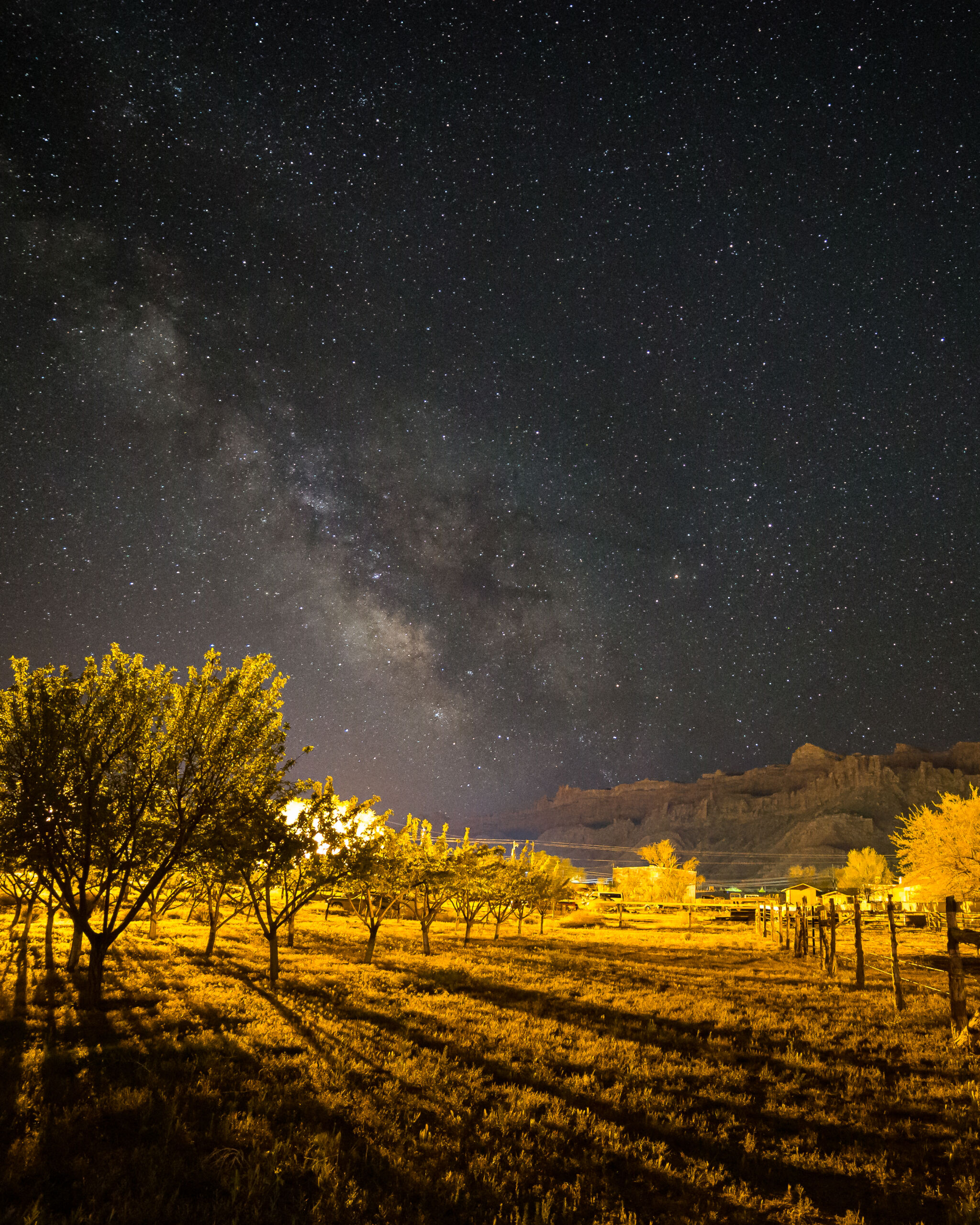
Photo title: Plans Dashed by Light Pollution
Photographer: Carly Stocks
Category: The Impact of Light Pollution
Country: U.S.
Location of photo: Moab, Utah, U.S.
Story behind the photo: I was so excited when I discovered this orchard on the property we were visiting on the outskirts of Moab. I checked the Milky Way alignment on my phone and made my plans for the evening. Little did I know that behind the orchard was a warehouse with at least half a dozen bright parking lot lights. There were also two very tall unshielded street lights on the road leading up to the warehouse. After most my other planned shots were unsuccessful due to the lights washing out and creating glare on the Milky Way, I was pretty discouraged. Finally, the Milky Way moved further west, and I could stand to the west of the orchard trees and position myself so that the trees helped block out most the glare. They could not block out the horrible orange color the lights cast over everything. While I found some ways fix the color in other images, I left it unaltered here. Now I know why the house we were visiting had blackout curtains.
Technical information: Single exposure | Lens: Rokinon 14mm f/2.8 IF ED UMC | Aperture: 3.2 | ISO: 5000 | Shutter speed: 13 seconds
We’d like to extend a special thank you to presenting sponsor Visit Utah and prize partner Peak Design for helping support this year’s contest.
You can view all of the entries here. To see the winners from last year, click here.
Feeling inspired? Check out these astrophotography tips and tricks and take a photo of your own.




